
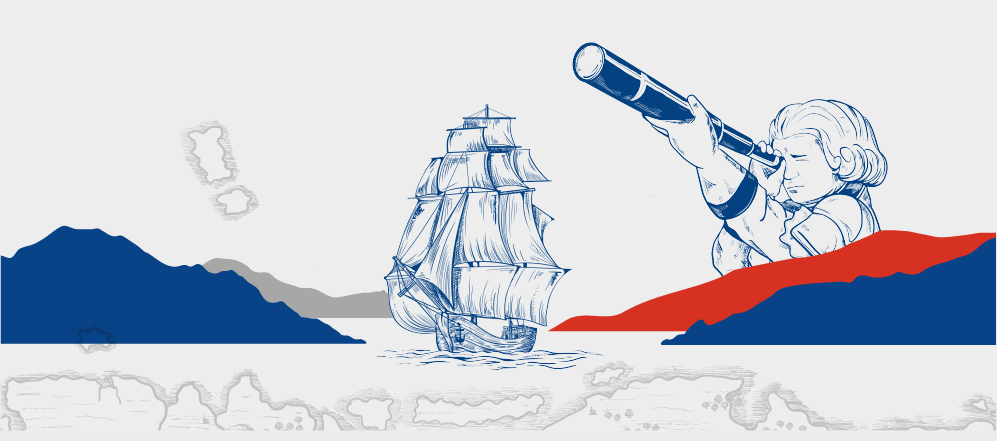
貝紐夫斯基在戰爭時期被俘,逃離途中一路航行南下,經過了日本來到臺灣東部沿海,分別在蘇澳灣附近和冬山河出海口登陸,留下和臺灣東部原住民衝突與交流的歷史紀錄。
展覽圖片提供|高嵩明 老師、馬丁‧博塔文(斯洛伐克經濟文化辦事處代表)、匈牙利地理博物館
Count de Benyowsky was captured in the war, and on his escape, he sailed south to arrive on the east coast of Taiwan via Japan, making stops at SuAo Bay and the Dongshan River estuary, and leaving behind historical records of his conflicts and interactions with the indigenous people in eastern Taiwan.
Photos Courtesy of|Sommer Kao、Martin Podstavek、 Hungarian Geographical Museum, Érd, Hungary
根據貝紐夫斯基伯爵的日誌記載,1771年8月26日,船艦在蘇澳灣初次登陸,便遭到某個原住民部落的攻擊,並於隔天27日發生短暫戰鬥。為避免再生意外,他們便順著洋流北行,於28日轉向加禮宛灣登陸(現在宜蘭冬山河口);此次他們則受到了歡迎,噶瑪蘭族人們帶著家禽、稻米、水果等,與他們交換別針、縫針等物品。同日巧遇一位疑來自泰雅族部落的西班牙人
In Count de Benyowsky's journal, the ship landed in Yilan twice. For the first time, on August 27, he stayed in Suao Bay for a day, but was severely attacked by the local aborigines, so he lifted anchor and continued northward along the ocean current. The next morning, they arrived at Jialiwan Bay, which is now the mouth of Dongshan River in Yilan. This time, Count de Benyowsky and his party were welcomed. The Kavalan people showed up with meat, rice, vegetables and fruits, and exchanged pins, sewing needles and other tools with Count de Benyowsky and his party. Introduced by a Spaniard from Manila, Count de Benyowsky and his party found a camp where they could take a break and started a series of
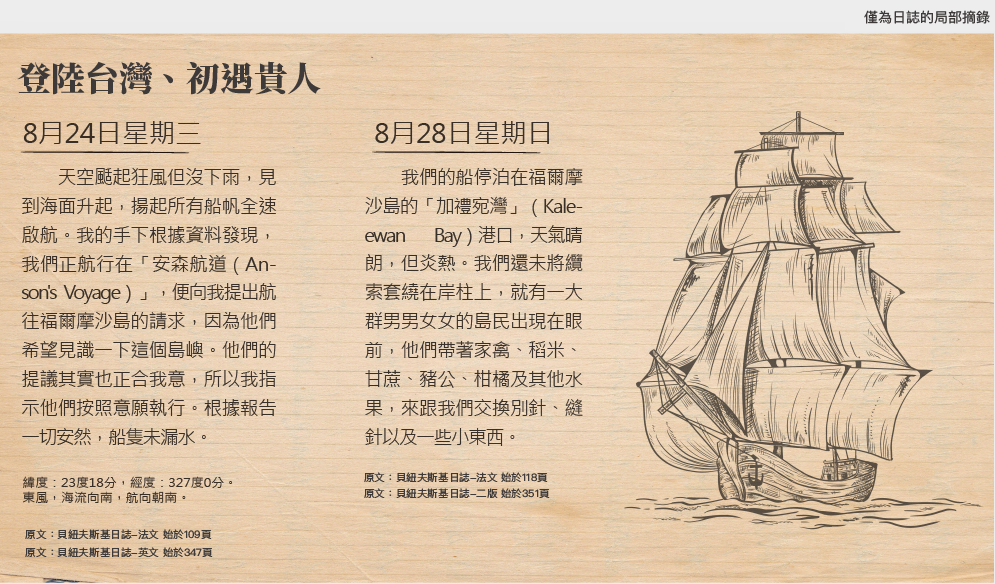
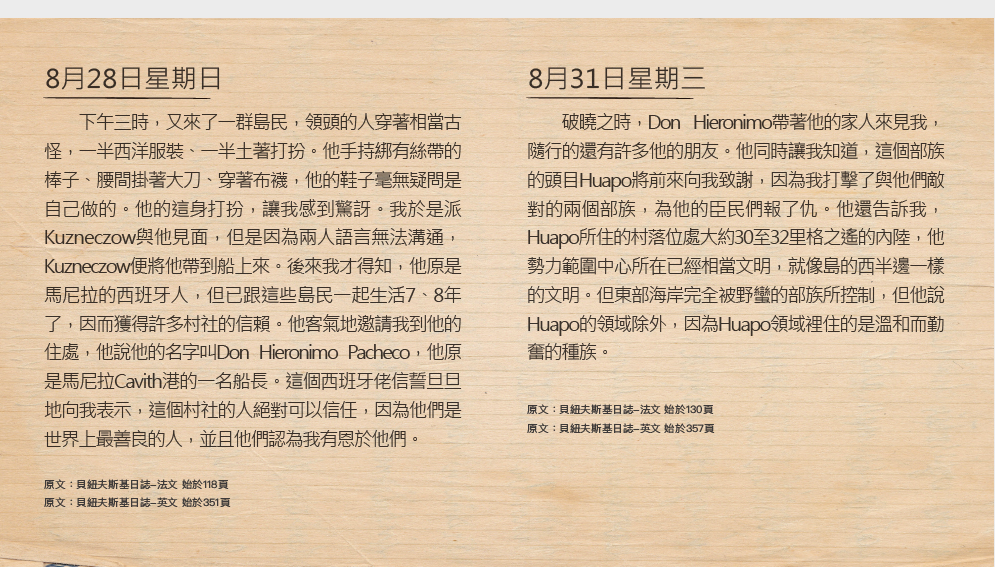
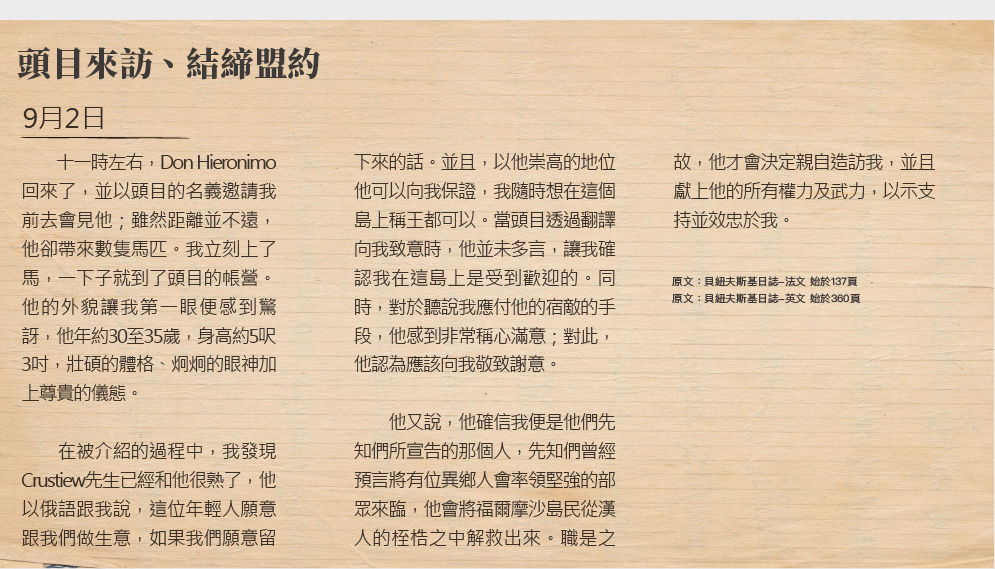
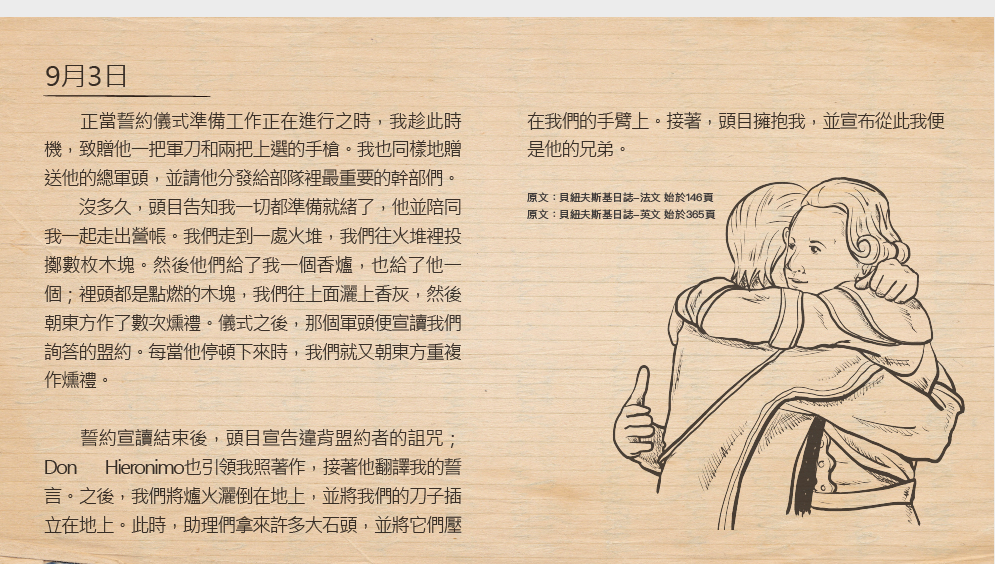
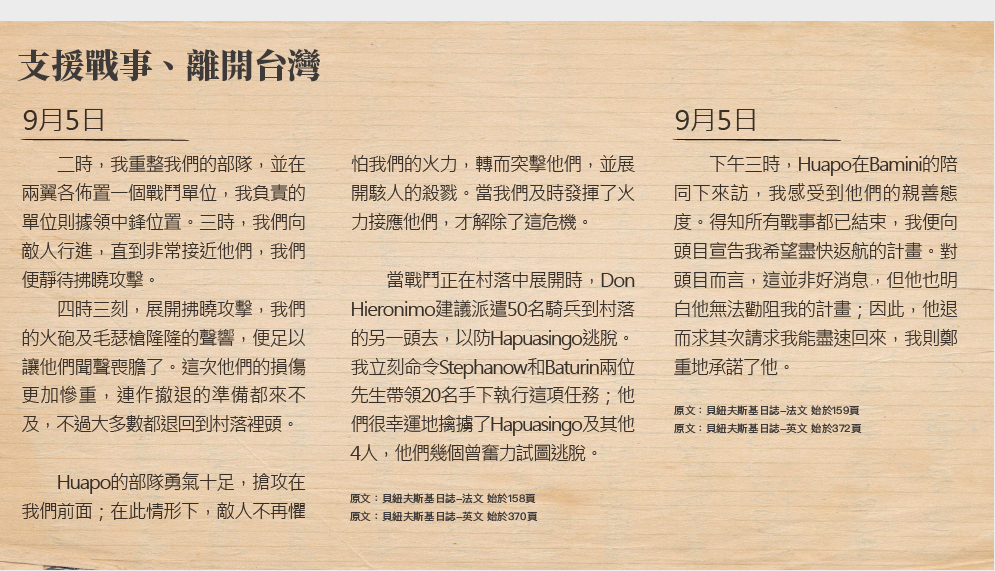
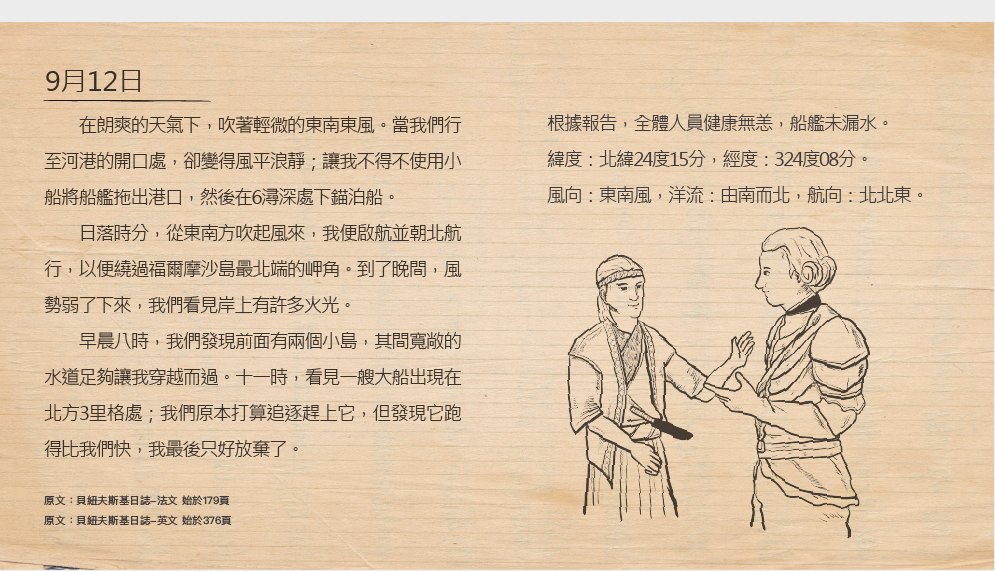
詳閱中文完整版本 譯者:莊宏哲 老師 摘譯自1790年倫敦英文首版
Count de Benyowsky’s Journal – Chinese Edition Translator: Chuang Hung-Che Excerpt from the First English Edition Published in London in 1790
詳閱英文完整版本(世界首次發行版本,由法文翻譯後出版)出版社 Dublin, P. Wogan [etc.] 出版年代 1790
Count de Benyowsky’s Journal – English Edition (World’s first English edition, translated from French) Publisher: Dublin, P. Wogan [etc.] Date of Publication 1790
詳閱法文完整版本 (日誌原手寫版本)出版社 Chez F. Bursson 出版年代
1791Count de Benyowsky’s Journal – French Edition (The Original Hand-Written Version) Publisher: Chez F. Bursson Date of Publication 1791
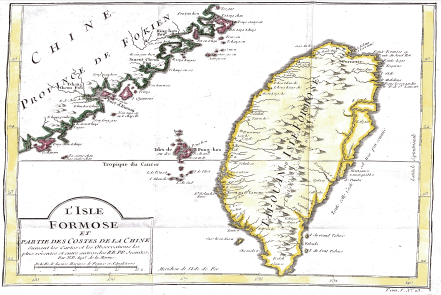
18世紀時的宜蘭,平原上是善於航海與貿易的噶瑪蘭族,族人農耕、狩獵、織布,生活富饒。入了山則是驍勇善戰的泰雅族的領地,擅闖者便像進入了山林戰場,時刻都不能鬆懈。而宜蘭的南邊蘇澳,則因為地形特殊形成天然的港口,居住著猴猴族人與平埔族人。南島語系的噶瑪蘭族,傳說在距今1,000年以前,和其他南島民族從南方Sanasai島嶼渡海來到台灣,在漢人踏入蘭陽平原之前,宜蘭古稱噶瑪蘭、甲子蘭或蛤仔難,可知當時噶瑪蘭族在蘭陽平原上是最優勢族群。
In 18th-century Yilan, the Kavalan people, who were skilled navigators and traders, lived on the plains; they farmed, hunted, and wove, living a life of abundance. The mountains were the territories of the brave Atayal warriors. Wandering into the mountains was like walking into a battlefield, and people could never let down their guards. In SuAo to the south of Yilan, the unique geological features formed a natural harbor, and was home to Qauqaut and the Taiwanese Plains Indigenous Peoples. The Austronesian Kavalan people, according to legends, crossed the ocean and arrived in Taiwan with other Austronesian peoples from Sanasai Island in the south some 1,000 years ago. Before Han Chinese set foot on the Lanyang Plain, Yilan was known as Kavalan, Chia Chi Lan, or Kapalan in the past, proving that the Kavalan people were the dominant race on the Lanyang Plain at the time.
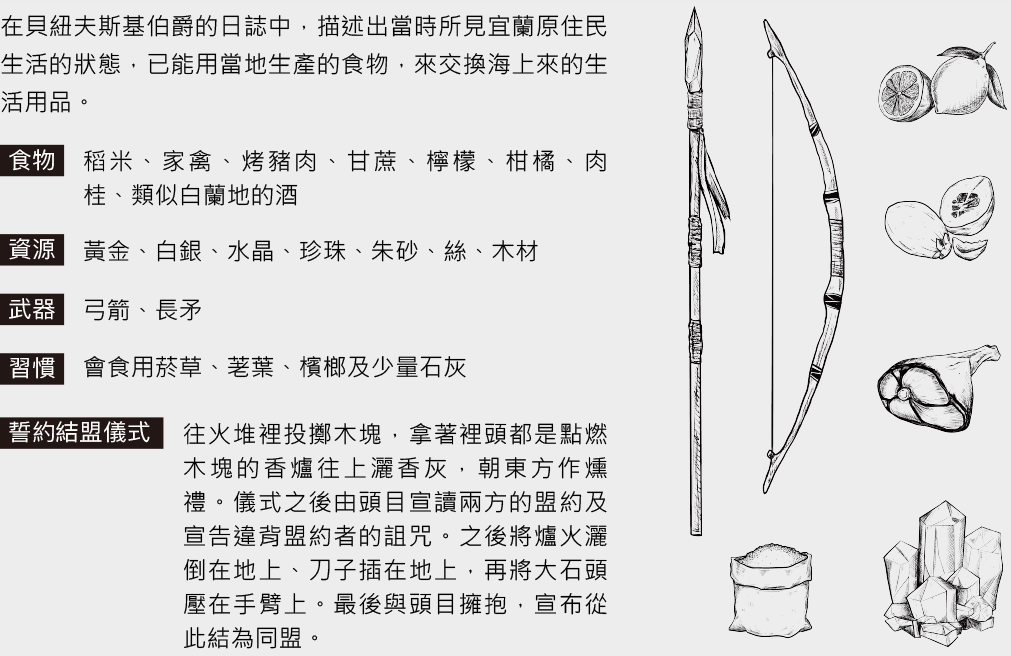
In his journal, Count de Benyowsky described the lifestyle of Yilan’s indigenous peoples he saw. They could already use locally produced food to exchange for daily necessities that came over by the sea.
Food: rice, poultry, grilled pork, sugarcane, lemon, citrus fruits, cinnamon, and brandy-like liquor
Resources: gold, silver, crystal, pearl, cinnabar, silk, and wood
Weapons: bow and arrow, spear
Habits: consumed tobacco, piper betel leaf, betel nut, and small amount of lime.
Oath of Allegiance Ritual: toss wood blocks into fire, spread ashes upward from the incense burner containing the burning wood blocks, and bow to the east. After the ritual, the chief would read out the convent and curse those who would violate it. Then, the pledger would spread the fire from the burner onto the ground, stick a knife into the ground, and place a large stone on his arm. Finally, he embraces the chief, declaring their alliance.
貝紐夫斯基伯爵為了說服歐洲國家,將福爾摩沙島列為殖民地,對當時原住民的景況做了以下的筆記:
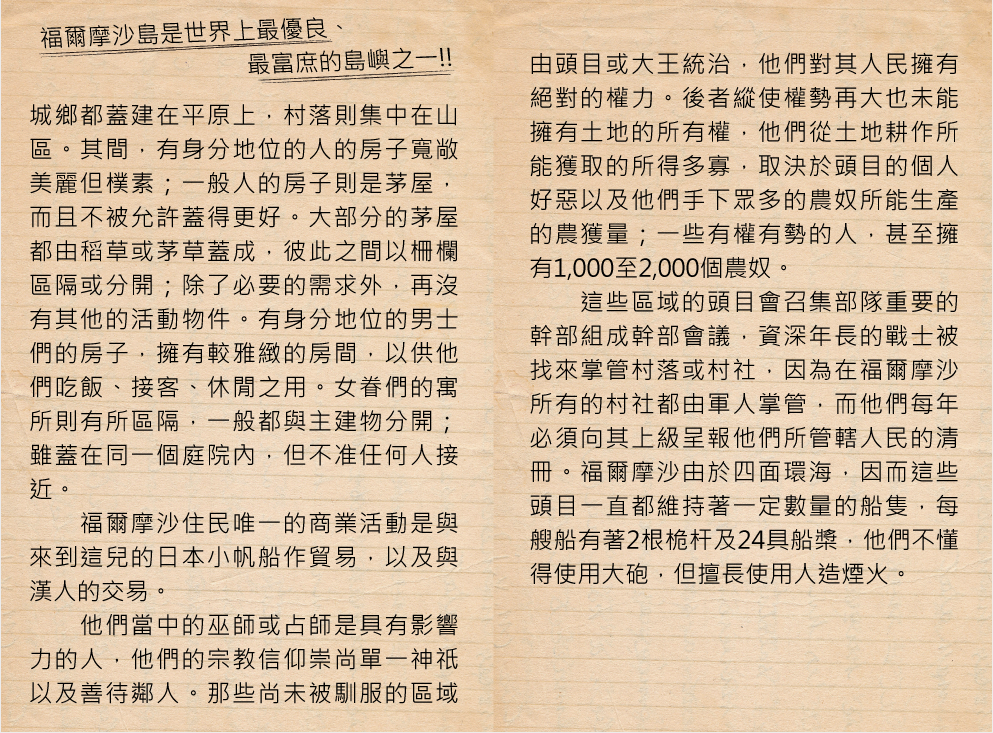
To convince European powers to colonize Formosa, Count de Benyowsky took detailed notes on the life of indigenous peoples at the time:
The island of Formosa is one of the most ideal and abundant islands in the world.
Cities and towns are built on plains, whereas villages are primarily in the mountains. Among them, those with status and wealth live in spacious and beautiful houses that are simple and unadorned; common people live in straw huts, and are forbidden to build better houses. Most straw huts are built with straw or thatch, and are separated by fences; other than the necessary ones, the huts have no other loose components. Men with status have houses with more sophisticated rooms for purposes of dining, reception, and recreation; women’s quarters are usually separated from the main building; although they live in the same courtyard, no one is allowed to come near.
The only commercial activity of the people in Formosa is trade with Japanese sailboats that come here, as well as with Han Chinese.
Among them, shamans or fortune tellers are the most influential. They believe in a single god and are friendly to their neighbors. Those untamed regions are ruled by chieftains or kings, and they have absolute power over their subjects; a commoner may be powerful, but he can never possess any land; his share of the harvest is determined by whether he is favored by the chief, as well as the production of his slaves. Some powerful men have as many as 1,000 or even 2,000 slaves.
Chiefs of these regions call upon important figures in their tribes to form tribal committees; senior warriors are assigned to govern villages or communities, for all the villages and communities in Formosa are ruled by soldiers and they have to report to their superiors a list of the people under their governance every year. Formosa is an island surrounded by sea, and therefore, these chiefs have always maintained fleets; each ship has two masts and 24 oars; they do not know how to use canons, but use man-made fire and smoke very well.
譯者:曾倚華
Translator: Tseng Yi-Hua
平原上的噶瑪蘭族
宜蘭古稱噶瑪蘭、甲子蘭或蛤仔難,在漢人踏入蘭陽平原之前,噶瑪蘭族聚落型態為鄰近河川的小型集村,在清領時期被以「噶瑪蘭三十六社」統稱,根據調查,噶瑪蘭的舊社遺址至少超過40個以上。18世紀末期,漢人大量移墾蘭陽平原,利用各種手段巧取橫奪噶瑪蘭人的土地,有些噶瑪蘭人因此被迫離開家園,陸續遷出原居地,甚至流離到花東地區。
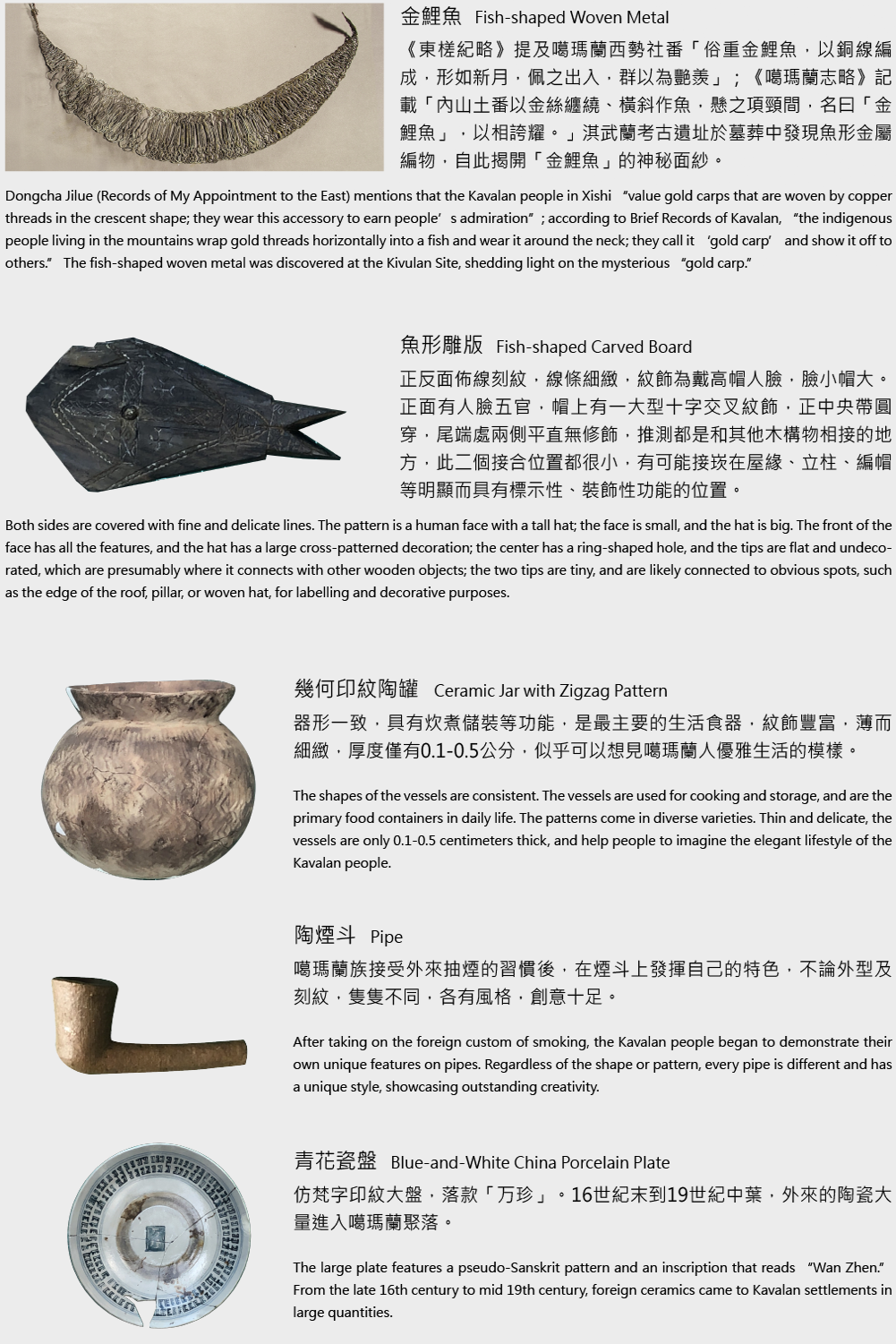
The Kavalan People on the Plain
In the past, Yilan was known as Kavalan, Chia Chi Lan, or Kapalan. Before Han Chinese set foot on the Lanyang Plain, the Kavalan people settled in small villages near rivers, which were referred to as the “36 communities of Kavalan” during the Qing dynasty. According to research, there are over 40 historical sites of old Kavalan communities. In the late 18th century, large groups of Han people began to immigrate and settle here, taking over Kavalan people’s properties through all kinds of schemes and means, and thus, some Kavalan people relocated elsewhere.
文物出自:礁溪鄉淇武蘭考古遺址出土
Relics Unearthed from: Kivulan Site in Jiaoxi Township

1771年的8月,噶瑪蘭的海岸來了一艘航海船,在岸上的噶瑪蘭族人眼見浩浩蕩蕩的貝紐夫斯基伯爵一行人正準備登陸。如果你是當時的噶瑪蘭族人,會想對貝紐夫斯基伯爵說什麼呢?
In August 1771, a navy ship arrived at the coast of Kavalan. They were Count de Benyowsky and his crew. If you were a Kavalan at the time, what would you want to say to Count de Benyowsky?
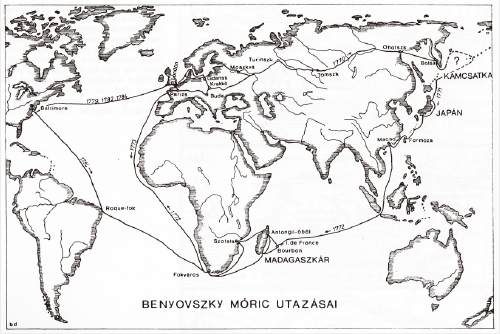
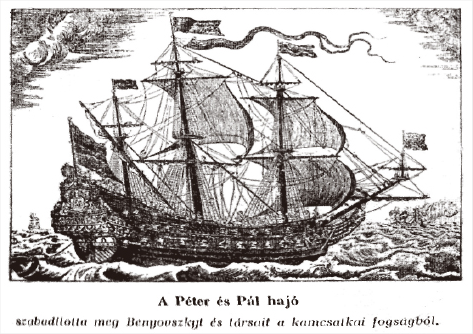
1762年貝紐夫斯基伯爵加入軍隊參與「七年戰爭」。兩年後,他因為與當權者的宗教信仰不同,他被迫於1766年前往波蘭。1769年,貝紐夫斯基伯爵加入了波蘭的聯盟陣線,1770年因抗俄軍事行動而被俘,被關在位於俄國東邊的堪察加半島監獄中,1771年貝紐夫斯基伯爵越獄成功,並且劫走了俄國軍艦補給船聖彼得與聖保羅號,在14個月的旅程中,貝紐夫斯基伯爵一路從阿留申群島、阿拉斯加、日本、琉球等地,才終於來到美麗的福爾摩沙,開啟與宜蘭原住民的傳奇邂逅。
In 1762, Count de Benyowsky joined the military and fought in the “Seven Years’ War.” Two years later, because of his different religious view with the authority, he was forced to flee to Poland in 1766. In 1769, Count de Benyowsky joined Poland’s Confederation of Bar. In 1770, he was captured for his military operations against Russia and was kept captive in a prison on the Kazan peninsula in eastern Russia. In 1771, Count de Benyowsky successfully escaped and captured a Russian war ship, “St. Peter and Paul.” Over his 14-month journey, Count de Benyowsky travelled all the way from Aleutian Islands, to Alaska, Japan, and the Ryukyus, before finally reaching the beautiful island of Formosa, and thus began his legendary encounter with the indigenous people of Yilan.
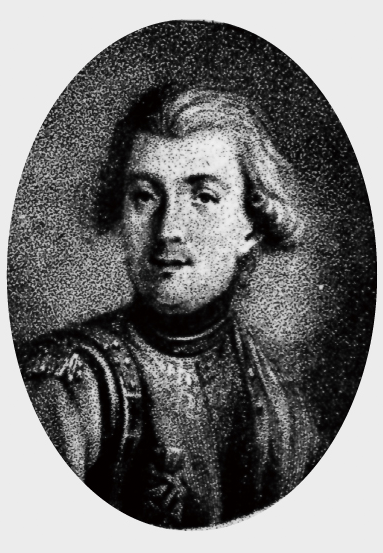
貝紐夫斯基伯爵出生於現在斯洛伐克的弗爾博韋(Vrbové),當地在17世紀時仍屬於匈牙利王國,貝紐夫斯基的家族同時擁有斯洛伐克及匈牙利的貴族血統。又因1768年貝紐夫斯基伯爵參與了波蘭的「聯盟陣線」,共同對抗俄國,因此匈牙利、斯洛伐克及波蘭三國都主張貝紐夫斯基伯爵是他們國家的人。
Mauritius Augustus, Count de Benyowsky was born in present-day Vrbové, Slovakia, which was under the rule of the Kingdom of Hungary in the 17th century, and the Benyowsky family had both Slovak and Polish noble bloods. In 1768, Count de Benyowsky joined Poland’s “Confederation of Bar” to fight against Russia, and therefore, all three countries, Hungary, Slovakia, and Poland, consider him a national hero.

噶瑪蘭族的住屋建築屬於半開放空間的高架建築,可以隔絕蛇、鼠、瘴氣等,稱為「干欄式建築」。外圍種有竹林圍住部落房舍以區別空間,並且具有防風及防禦外敵的功能。噶瑪蘭族是親水的民族,善於航海與貿易,噶瑪蘭族人利用舟船運輸以交換所需物資,北至基隆、臺北,南至花蓮平原。也與外國商船交換布匹、鐵鍋與裝飾品等。
身上流淌著海洋基因,祖先來自南方島嶼的噶瑪蘭族,一直留在多水的低地,一個可以隨時親近海洋的地方。每年農作收割季節,他們會駕船北上到淡水、關渡一帶進行獵首。十七世紀西班牙傳教士記錄的這般海上行徑,一直到十九世初都還存在著,1809年,日本人文助漂流到台灣東海岸大港口阿美族的村落,他不僅在途中遇上出海的「噶瑪蘭族」,更聽到阿美族談到每年從仲夏到初秋之間,他們很害怕遇上那些從海上呼嘯而過,見人就擄的「噶瑪蘭族」。
The Kavalan houses were semi-open elevated buildings, which prevented snakes, rats, and miasma; these buildings are called “stilt houses.” Houses in a village were encircled by bamboo forest, which marked the boundary and could prevent wind and defend enemies. The Kavalan people were fond of water, and were skilled navigators and traders. They used ships to transport goods and exchange for necessary supplies, travelling north to Keelung and Taipei, and south to the Hualien Plain; they also exchanged for fabrics, iron pots, and decorative accessories with foreign merchant ships.
With genes of the ocean, and ancestors from southern islands, the Kavalan people had stayed in lowlands near water, where they could access the sea whenever they wanted. During harvest every year, they would travel on their vessels north to hunt in Tamsui and Guandu. This route recorded by Spanish missionaries in the 17th century remained existent until the early 19th century. In 1809, a Japanese man named Fumisuke drifted to an Amis village at a large harbor on Taiwan’s east coast; he not only encountered the “Kavalan” people who went out to the sea, but also heard the Amis people talking about their fear for the “Kavalan” people that came and went via the sea and kidnapped their people every year from midsummer to early autumn.
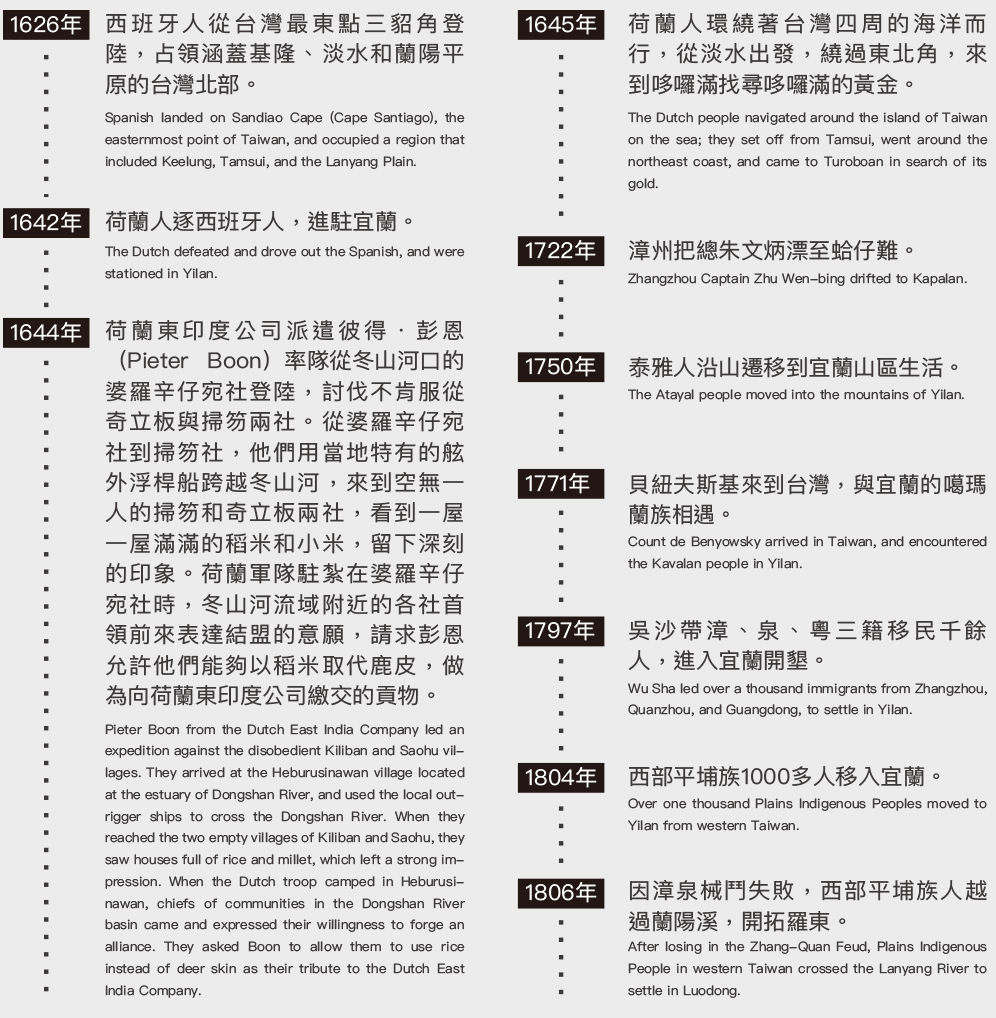

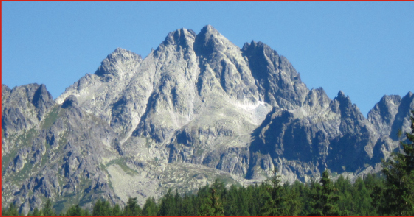
塔特拉山脈是斯洛伐克與波蘭兩國的界山,多冰斗、溶洞、山嶽湖泊和懸谷,是喀爾巴阡山脈之中最高的山,塔特拉山脈是斯洛伐克人心靈的寄託與國家的象徵,春、夏、秋三季是極佳的登山與健走路徑,冬季則是受歡迎的滑雪天堂及度假勝地。

The Tatra Mountains is a mountain range that forms the natural border between Slovakia and Poland. The Tatra Mountains have many glacier cirques, caves, mountain lakes, and hanging valleys, and are the highest range within the Carpathians. The Tatra Mountains are the spiritual home and national symbol of the Slovakian people. In spring, summer, and fall, it boasts the most ideal mountain-climbing and hiking trails; in winter, it is a popular ski paradise and vacation destination.
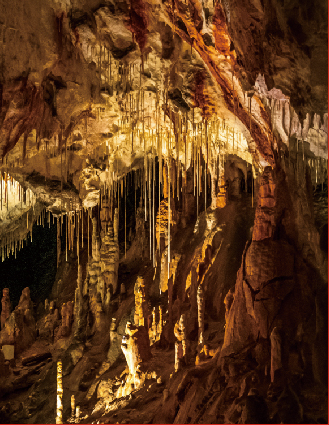
被聯合國教科文組織列為世界自然遺產的溫帶喀斯特地貌溶洞群,其遺址範圍包括斯洛伐克和匈牙利在內的712處洞穴。這些洞穴中的沉積物和化石,紀錄了白堊世晚期、第三紀早期以及更新世冰川作用下,亞熱帶和熱帶氣候的地質狀況。
The temperate karst caves have been inscribed as UNESCO World Natural Heritage sites, which include 712 caves in Slovakia and Hungary. The deposits and fossils in these caves are records of the geological conditions in the subtropical and tropical climates under the glacial process in late Cretaceous, early Tertiary Period, and Pleistocene.

由斯洛伐克的牧羊人就地取材雕刻製作而成,長度約160-200公分,並與一個約50-80公分的突起部分相連,使氣流能通過狹長的筒身,到達較寬厚的低音部分。福雅拉低沉蒼涼的音色相當適合山居生活,福雅拉的曲目與表達形式,多與牧羊人的日常生活和工作有關,在節日慶典中,會由職業樂師以及牧羊人共同演出。
Carved by Slovak shepherds using easily found local materials, fujara ranges from 160 to 200 centimeters in length; the main body is connected with an air channel approximately 50 to 80 centimeters long, which allows air to flow through the narrow body to reach the lower, bass part of the instrument. The low, desolate tone of fujara is perfect for life in the mountains, and the songs and expressions of fujara are mostly related to the daily life and work of shepherds. During festivals, professional musicians and shepherds will perform in collaboration.
斯洛伐克新兵舞是一種即興舞蹈,源於18世紀軍隊,用來招募年輕男子入伍。通常是以音樂伴舞,首先演唱歌曲,接著慢舞,再來快舞,通常由一組男舞者各自詮釋音樂創作舞步,沒有嚴格的編舞限制,根據地方差異,舞蹈結構和節奏相當多樣化,是地方傳統節慶與各種儀式重要的節目。
Moravian Slovak Verbuňk is an improvised dance originated in the military during the 18th century, which was a means of recruiting young men enlist. Usually, performers dance to music; they will sing first, then dance slowly, and finally dance at a rapid pace; usually, a group of male dancers dance to their own interpretation of the music, and there are no strict choreographic restrictions. Varied from region to region, the dance features diverse structures and tempos, and is an important show at local traditional festivals and rituals.
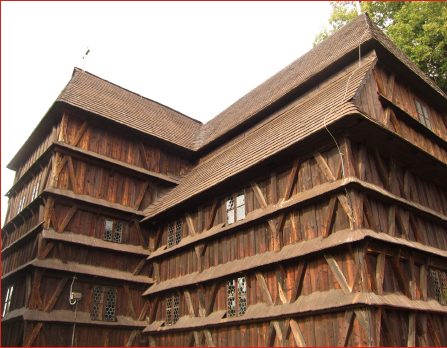
喀爾巴阡山斯洛伐克段的原木教堂,列入世界遺產名錄中包括兩座羅馬天主教教堂,三座新教教堂以及三座希臘東正教教堂,總共8座教堂,為三種不同宗教共存社區之木製宗教建築的代表。
The Wooden Churches of the Slovak part of Carpathian Mountain Area inscribed on the World Heritage List consist of a total of eight churches, including two Roman Catholic, three Protestant and three Greek Orthodox churches, which are iconic religious buildings of wooden architecture in the community where three different religions coexist.
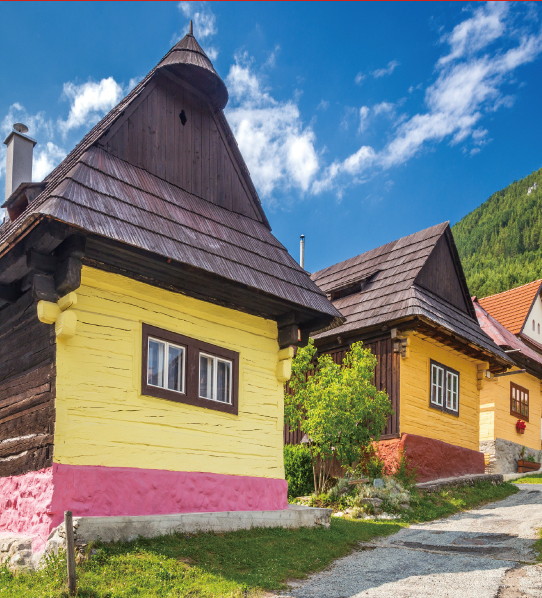
弗科利內茨村建築群的年代大多可追溯至19世紀,佈局由山區的丘陵地形所決定,特點是木屋都位於狹窄的區塊上,呈現狹長型分佈,後面有馬厩、穀倉和附屬建築,廣場上有公共井,代表了傳統的歐洲山區鄉村聚落,人類與自然相互依存的關係。
Most of the buildings in Vlkolinec Village can be traced back to the 19th century. The layout of the village, defined by the hilly terrain of the mountains, features log houses situated on narrow lots with stables, barns and smaller outbuildings in the rear, as well as a public well in the square. The village represents the traditional European settlements in mountains, where men and nature shared a codependent relationship.
波伊尼策城堡被譽為是斯洛伐克最夢幻的城堡,也被稱為童話城堡,和德國南部的新天鵝堡一起被引用為迪士尼夢幻城堡的設計原形,這座城堡矗立在11世紀中世紀城堡遺址上的一個大型石灰丘上,是中歐遊客最多、最美麗的城堡之一。
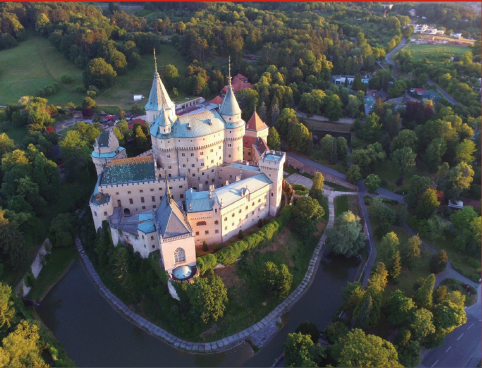
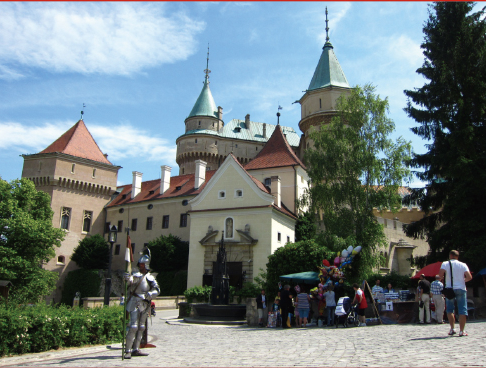
Revered as the most magnificent castle in Slovakia, Bojnice Castle is also known as the Fairytale Castle, and has inspired the design of Disney Castle together with Neuschwanstein Castle in southern Germany. Standing on a large travertine hill, Bojnice Castle is built on the site of a medieval castle from the 11th century, and is one of the most visited and beautiful castles in Central Europe.
奧拉瓦城堡始建於13世紀的匈牙利王國,直到1611年才完成了現在的城堡結構,但是在1800年又被燒毀。在經過荒廢和兩次世界大戰之後,奧拉瓦城堡現在是斯洛伐克的國家紀念建築,也被公認是斯洛伐克最美麗的城堡之一。
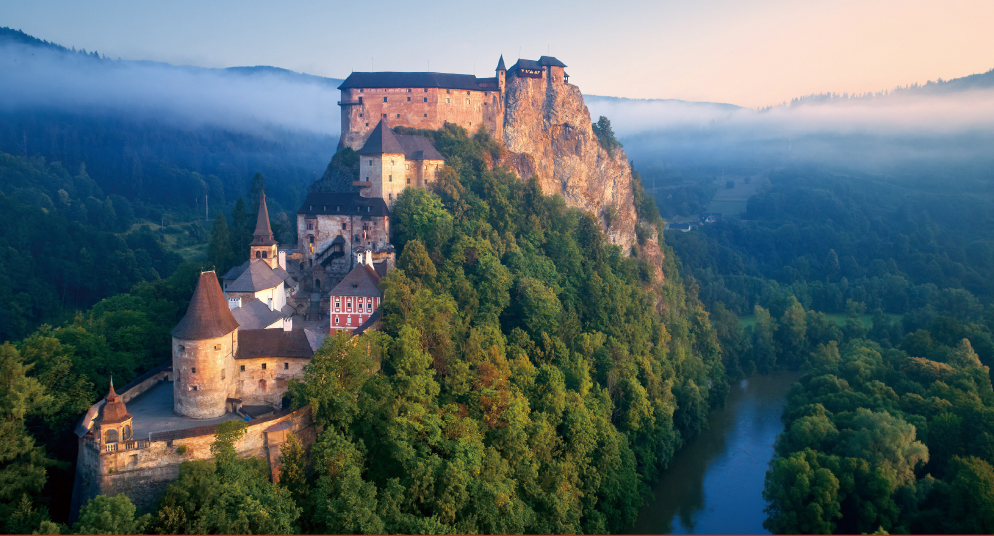
Construction of Orava Castle first began during the rule of the Kingdom of Hungary in the 13th century, and its present structure was not finalized until 1611, but it burned down again in 1800. After a period of dilapidation dating until World War II, it has now become a national monument of Slovakia, and is regarded as the most beautiful castle in Slovakia.
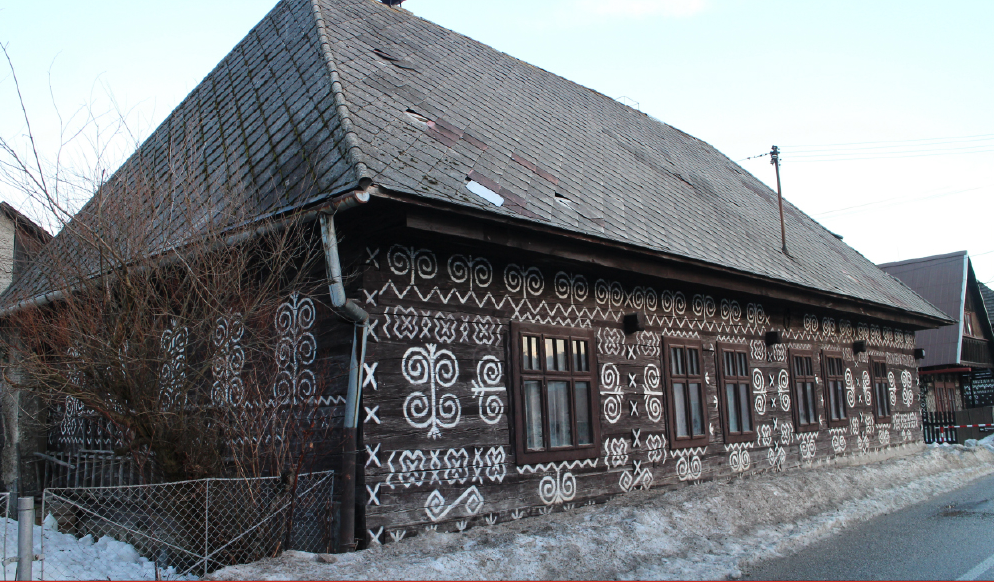
斯洛伐克境內的木造建築數量驚人,其中齊齊馬尼村最早被記載於1272年,當地人用石灰裝飾木屋,以文藝復興風格的繪畫填滿外牆,形成獨特的村落景觀。
There is a stunning number of wooden buildings in Slovakia, among which, the earliest records of the village of Čičmany date back to 1272, where local people used lime to decorate their log houses, and filled the façades with Renaissance-style drawings, forming a unique village landscape.
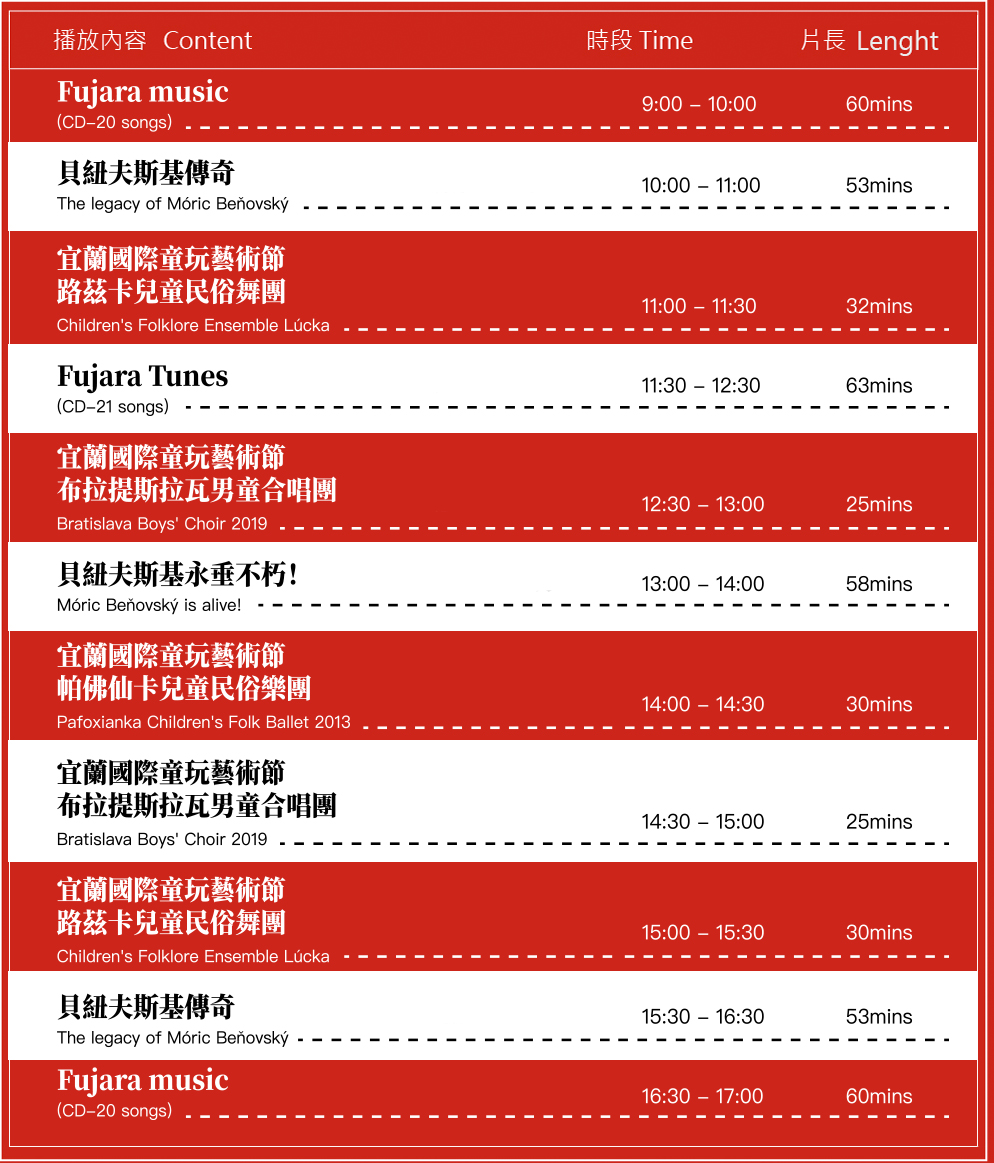
斯洛伐克是中歐的內陸國家,東南鄰烏克蘭、西接奧地利,南與匈牙利相連,西北與捷克相通,北與波蘭接壤。西元9世紀時的斯洛伐克屬於大摩拉維亞帝國,後來長期受到匈牙利的統治。因為斯洛伐克擁有豐沛的農、林、礦等自然資源,吸引了許多不同族裔的人們來此定居,在16世紀之前,境內已經有相當多族群在此生活,包含了日耳曼人、羅馬尼亞人、賽爾維亞人、馬札兒人等。16世紀下半葉,土耳其帝國佔領了哈布斯堡君主國三分之二的領土,讓斯洛伐克人成為了哈布斯堡君主國內最大的族群,為哈布斯堡君主國抵禦土耳其帝國的侵襲,這也讓斯洛伐克人的民族意識逐漸開始覺醒。
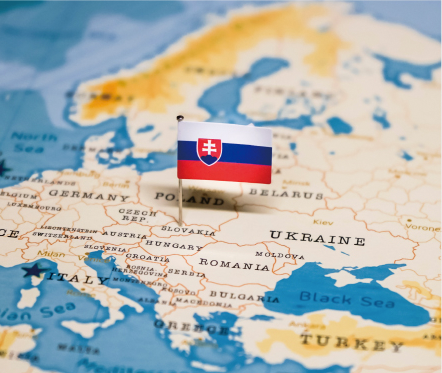
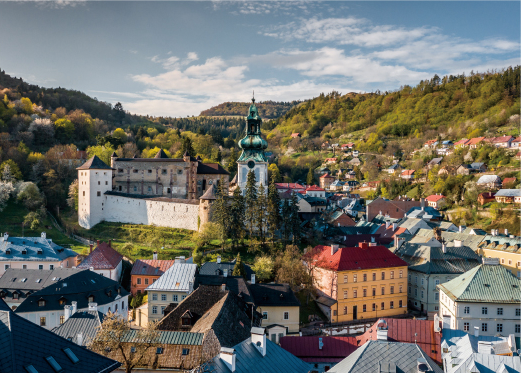
Slovakia is an inland country in Central Europe, neighboring Ukraine to the east and Austria to the west, and bordering Hungary to the south, Czech to the northwest, and Poland to the north. In the Ninth century, Slovakia was part of the Great Moravian Empire, and was later ruled by Hungary for an extended period of time. Because of its rich natural resources, such as agriculture, forest, and minerals, Slovakia attracted people of different ethnicities to settle here; before the 16th century, there were already many ethnic groups living in Slovakia, including German, Romanian, Serbian, and Magyars. In the second half of the 16th century, the Ottoman Turkish Empire occupied two-thirds of the territory of the Habsburg Monarchy, which made Slovaks the single largest ethnic group in the monarchy. The Slovakian people fought for the Habsburg Monarchy against Turkish invasions, which led to the awakening of the Slovakian national consciousness.
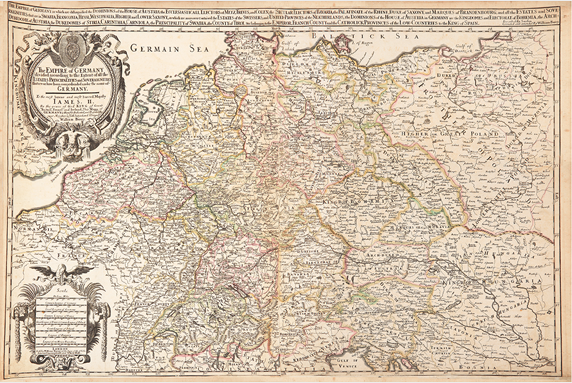
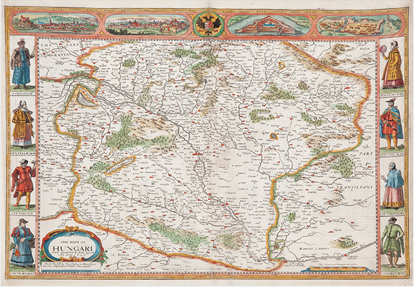
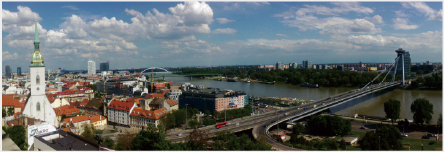
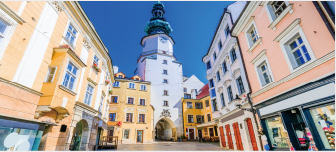
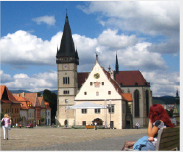
斯洛伐克人屬西斯拉夫民族,歷史可追溯到西元第9世紀,當時曾經建立大摩拉維亞帝國(Great Moravian Empire),其後斯洛伐克併入奧匈帝國之匈牙利王國的版圖。1918年奧匈帝國瓦解,從奧地利獨立的捷克,和從匈牙利王國獨立的斯洛伐克,兩國因為同屬於西斯拉夫民族語言文化相近而合併,聯合建立捷克斯洛伐克聯邦共和國(Republic of Czechoslovakia)。首任總統為馬薩里克博士。在1939-1945年第二次世界大戰期間,捷克領土遭德國納粹政府併吞,納粹德國也在斯洛伐克另立魁儡政權。第二次世界大戰結束後,捷克斯洛伐克聯邦共和國成立,1948年捷克斯洛伐克共產黨奪取政權成功,全境被關入「鐵幕」。直至1989年「天鵝絨革命」成功之後,才推翻共產政權,改行民主憲政。
The Slovak people are a West Slavic ethnic group. Their history can be traced to the Ninth century, when they built the Great Moravian Empire. Later, Slovakia was ruled by the Kingdom of Hungary for a long period of time. In 1918, the Austro-Hungarian Empire faltered. Czech declared independence from Austria, and Slovakia broke free from Hungarian control. The two nations came together due to their similar West Slavic languages and cultures, jointly establishing the Republic of Czechoslovakia. The first president was Dr. Tomáš Masaryk. During WWII, Nazi Germany annexed the Czechoslovakian territory, and established a puppet state. After WWII, the Third Republic of Czechoslovakia was established, but the Communist Party of Czechoslovakia successfully took power in 1948, and the entire country was locked behind the “Iron Curtain.” It was not until after the success of the “Velvet Revolution” in 1989 that the communist government was finally overthrown, and Czechoslovakia became a constitutional democracy.
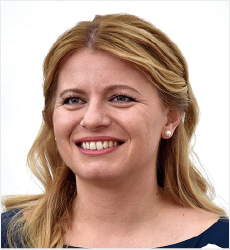
蘇珊娜·查普托娃
Zuzana Čaputová
女性政治家、律師、現任斯洛伐克總統。
查普托娃是進步斯洛伐克創始人之一,曾任該黨副主席。
Female politician, lawyer, and current Slovakian president. Zuzana Čaputová is one of the founders of political party Progressive Slovakia, and has served as its Vice-Chairwoman.

1939年11月15日,大學生在捷克斯洛伐克建國21周年的學生示威遭受暴力鎮壓受傷,當時控制捷克斯洛伐克的希特勒,將超過千名學生送往薩克森豪森集中營,並處決了其中9名學生。
1989年11月17日起一群學生在布拉格集會抗議1939年的事件,這場抗議很快就變成了反政府的示威活動,人們高喊“共產黨停止壟斷!”或“我們要自由選舉!”接下來一周,捷克斯洛伐克的人民持續自發性地聚集、示威,抗議運動的學生與成員開始以「公民論壇」的名義組織罷工,並與當時的政府代表進行協商。
1989年11月25日,發生天鵝絨革命中最大的示威活動。當時在布拉格萊特納公園聚集了超過80萬民眾。最後共產黨願意交出政權,並宣佈將於12月3日推出新政府。雖然如此,但是內閣卻始終沒有履行組建非共產黨政府的承諾。於是「公民論壇」決定將再次進行規模龐大的罷工,迫使共產黨政府最終在12月7日辭職。隨後的1989年12月29日,選出由瓦茨拉夫・哈威爾作為捷克斯洛伐克總統。
On November 15, 1939, university students were injured at a violently suppressed student demonstration on the 21st anniversary of the establishment of the Czechoslovak Republic. Hitler, who had control over Czechoslovakia at the time, sent over 1,000 students to the Sachsenhausen concentration camp, and executed nine of them.
On November 17, 1989, a group of students gathered in Prague in protest of the incident in 1939. Soon, the protest escalated into an anti-government demonstration, as people yelled “Stop the Communist Monopoly Rule!” or “We Want Freedom of Election!” In the following week, Czechoslovakian people continued to voluntarily gather together and demonstrate, and the students and members of the original protest began to organize strikes in the name of the “Civic Forum,” and negotiated with the government representatives at the time.
On November 25, 1989, the largest demonstration during the Velvet Revolution took place. Over 800,000 citizens gathered at Prague’s Letná Park. Eventually, the Communist Party of Czechoslovakia relinquished power and announced that a new government would be formed on December 3; however, the cabinet never fulfilled the promise of forming a non-communist government, and the “Civic Forum” decided to launch a large-scale strike again, forcing the communist government to finally resign on December 7. Few days later on December 29, 1989, Václav Havel was elected President of Czechoslovakia.
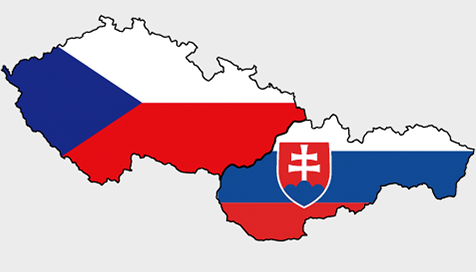
1992年6月,捷克斯洛伐克舉行國會大選,結果分別在捷克和斯洛伐克獲勝之兩大政黨因為政策相左,在經過多次談判之後決定將聯邦共和國分立,1993年1月1日,斯洛伐克與捷克兩國正式平和又理性地分離,隨後也相繼成為歐盟與申根公約的會員國。
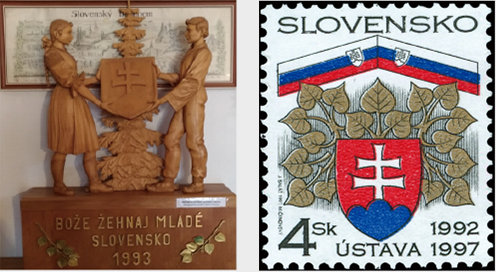
In June 1992, Czechoslovakia held a parliamentary election. The two winning parties in the Czech and Slovak regions had conflicting policies, and after several negotiations, decided to dissolve Czechoslovakia. On January 1, 1993, Czech and Slovakia officially separated peacefully and rationally, and both became member states of the European Union and Schengen Agreement.
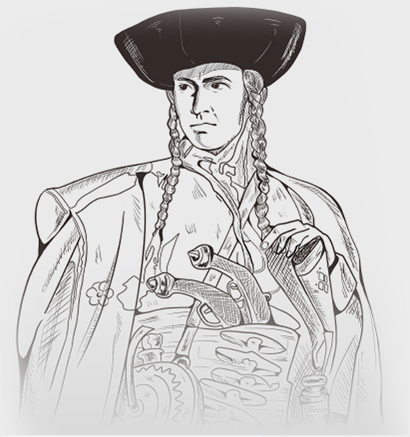
楊諾什克是斯洛伐克版的廖添丁,他出生在北斯洛伐克的小鎮帖荷瓦(Techová),他專門搶劫為富不仁的貴族與富商們,再將錢財分贈給窮苦人家。義賊楊諾什克劫富濟貧的事蹟,衍伸出許多傳說、神話和詩歌,成為斯洛伐克文學中不可或缺的角色,也是斯洛伐克人反抗強權的象徵, 1936年、1963年、2009年都有以楊諾什克為主角的電影。
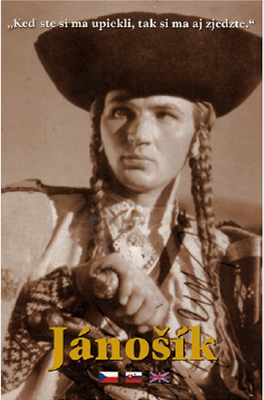
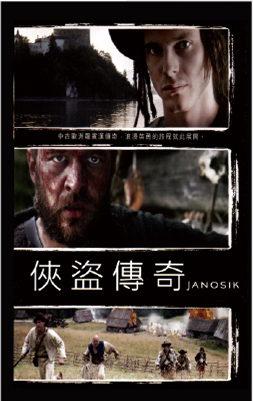
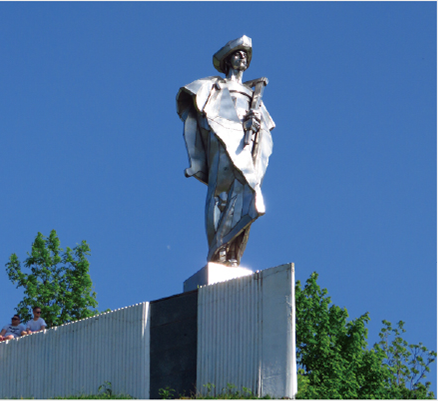
Juraj Janosik, the Carpathian Robin Hood or the Slovak version of Taiwan’s Liao Tianding, was born in a small Slovak town, Techová. He robbed rich noblemen and merchants and shared with the poor. His deeds have inspired many legends, myths, and poems, and he has become an indispensable character in Slovak literature, as well as the symbol of the Slovak people’s fight against authority. Films based on the life stories of Juraj Janosik have been made in 1936, 1963, and 2009.
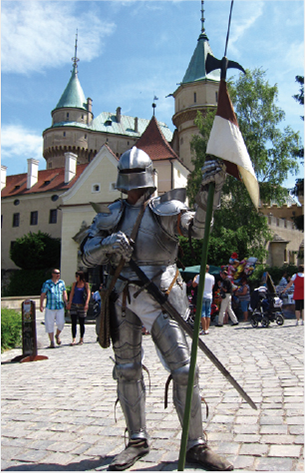
在1563年至1830年間,共有10位國王、1位女王和8位皇后在斯洛伐克首都布列提斯拉瓦的聖馬丁教堂加冕登基,為紀念這段輝煌歲月,每年九月的第一個星期六,布列提斯拉瓦就會舉辦「加冕遊行」,人們可以裝扮成五百年前的中世紀造型,鐵甲武士、公主、國王、大主教、貴族等角色參與遊行,時光彷彿倒流回中世紀歐洲,吸引許多遊客前來躬逢盛會。
Between 1563 and 1830, a total of ten kings, one queen, and eight royal wives were crowned in the Dome of St. Martin in the Slovak capital city of Bratislava. To commemorate this glorious period, Bratislava organizes “coronation parade” on the first Saturday of September every year, where people dress up in medieval costumes from five hundred years ago, such as armored knights, princesses, kings, archbishops, and noblemen, to participate in the parade; time seems to be turned back to the Medieval Europe, attracting many tourists to the city for the celebration.
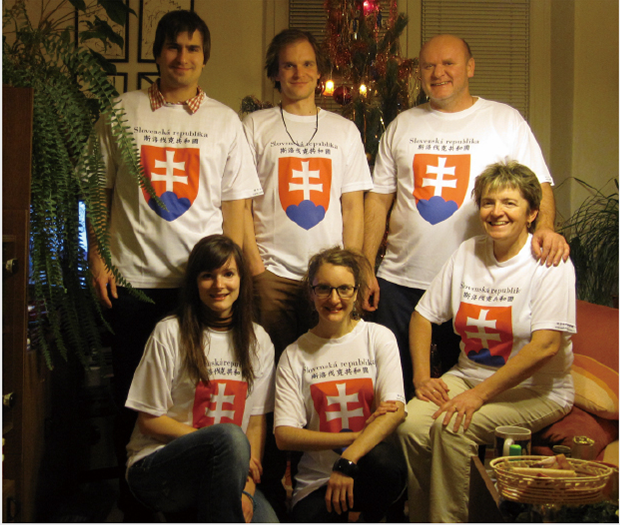
斯洛伐克國旗旗面由白、藍、紅三色橫向組成,代表斯拉夫族,國徽盾面上,藍色的山峰之巔矗立著一個白色的雙十字(Patriarchal cross),強調是基督信仰的國家。山峰代表的是高塔德拉山、法德拉山和馬德拉山。
The Slovak national flag consists of three horizontal stripes in white, blue, and red—the Pan-Slavic colors; on the coat of arms is a Patriarchal cross standing on the peak of a blue mountain, emphasizing that Slovakia is a country of Christianity. The peak of the mountain represents the Vysoká peak of the Tatra Mountains.
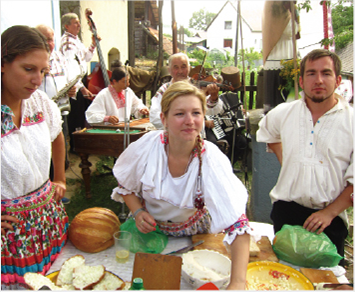
在斯洛伐克日曆中,每一天都有一個名字,在日期的下方是每天的名字,每一天對應一到兩個名字,在自己命名日這一天,就會像過生日一樣舉行慶祝會。
In the Slovak calendar, each day of the year has its own name, which is shown under the date; everyday corresponds to a name or two, and people celebrate their name days on the dates corresponding to their given names as if celebrating their own birthdays.

Pohoda是和平及放鬆的美好時光之意,每年七月的第二週會在特倫琴舉行,是斯洛伐克最大的夏季音樂節。
Pohoda means a wonderful time of peace and relaxation, and is held annually in the second week of July in Trenčín. It is the largest summer music festival in Slovakia.

是非常受年輕人歡迎的音樂節,以獨立音樂和電子音樂為主,在斯洛伐克著名的葡萄酒產區-皮耶許褡尼鎮舉辦,被評為歐洲十大最佳小節日之一。
It is a music festival popular among young people, featuring mainly indie and electronic music. The festival is held at the town of Piešťany, the famous Slovak wine region, and is revered as one of the ten best small festivals in Europe.

第二次世界大戰後,斯洛伐克運用豐富的礦產資源,以及重山隔絕可遠離戰火,相對安全的地理優勢,開始發展鋼鐵和機器製造等重工業。在冷戰時期成為武器生產的重要地區,如坦克、火炮、裝甲運兵車、教練機等,多數都出口給共產國家或第三世界國家。90年代後,斯洛伐克的軍工業規模大幅縮減,轉型以汽車、電子、機械加工、化工、通訊等現代工業為主。
After WWII, Slovakia took advantage of its rich mineral resources, as well as its relatively safe geographical location surrounded by mountains and away from wars, to develop heavy industries like steel and machine manufacturing, becoming an important weapons production region during the Cold War, making tanks, canons, armored personnel carriers, and aircraft trainers that were mainly exported to communist countries or third-world countries. After the 1990s, the Slovak military industry has shrunk in size significantly, and transitioned into modern industries, such as automotive, electronics, mechanical processing, chemical, and communications.
在2013年後,斯洛伐克的地理位置因位居歐洲中心,具有龐大的出口潛力,汽車製造業開始成為斯洛伐克的強勢產業,2019年生產超過110萬輛汽車,汽車製造業所出口得金額已超過318億歐元,包括知名汽車品牌BMW、Ford、PSA、Audi、Renault、Peugeot、Skoda、Land Rover及Jaguar等汽車零組件的生產,讓斯洛伐克供應商的銷售額每年增加3%以上,至今斯洛伐克在全球的人均汽車生產量已達世界之首。近年來,斯洛伐克與捷克、匈牙利、波蘭四個中歐國家,因平均國民所得快速增長,被稱為「高堡四國」,台灣企業包含台達電、鴻海(富士康)及友達光電等,也都在斯洛伐克投資設廠。
2021年,斯洛伐克創造出世界第一輛,結合跑車與飛機的空中飛車『Aircar』,並成功於斯洛伐克首都布拉提斯拉瓦和尼特拉兩個國際機場間,完成長達35分鐘的試飛,為空中交通工具的發展立下新的里程碑。
After 2013, the automotive industry has become one of Slovakia’s strong industries because Slovakia is located at the heart of Europe and thus enjoys enormous export potentials. In 2019, Slovakia produced over 1.1 million cars, and the export income of the automotive industry exceeded EUR 31.8 billion. Production of car parts and components for famous automakers like BMW, Ford, PSA, Audi, Renault, Peugeot, Skoda, Land Rover, and Jaguar, has driven the sales of Slovak suppliers to increase by over 3% annually. Today, Slovakia has already become the world’s largest producer of cars per capita. In recent years, four Central European countries, Slovakia, Czech, Hungary, and Poland, have been known as the “Visegrád Group” for their rapidly growing GNI per capita. Taiwanese enterprises, including Delta, Hon Hai (Foxconn), and AUO, have all invested in Slovakia and established plants.
In 2021, Slovakia created the world’s first “AirCar” that combined sports car and aircraft, which successfully completed a 35-minute test flight between the two international airports in the Slovak capital of Bratislava and Nitra, setting a new milestone for the development of air mobility vehicles.
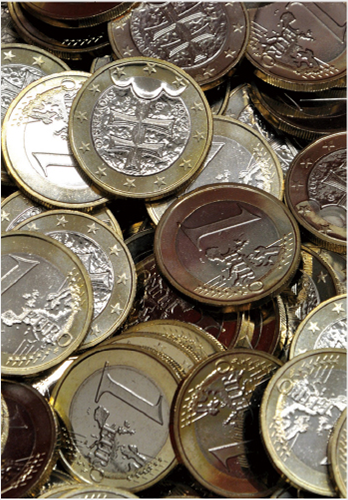
中世紀時期的斯洛伐克,貴金屬開採與產量居世界之冠,在斯洛伐克中部的山區,擁有著名的黃金礦城-克雷姆尼查,1328年設立的鑄幣局,近700年來仍持續運作中,因為這裡鑄幣的品質好、純度高,現在除了生產斯洛伐克使用的歐元,也幫許多國家鑄造貨幣。當地的鑄幣博物館不僅展示硬幣的製作流程,還可以製作自己專屬的紀念幣。
In the Middle Ages, Slovakia led the world in excavation and production of precious metals. Famous for its gold mines, Kremnica is a town in the mountainous region in Central Slovakia, where a mint was established in 1328. For nearly 700 years, the Kremnica Mint has continued to remain in operation, for it mints coins with high quality and purity. Today, in addition to euro coins used in Slovakia, the mint also mints coins for many other countries. The Museum of Coins and Metals in Kremnica not only displays the coin minting process, but also allows visitors to make their own memorial coins.
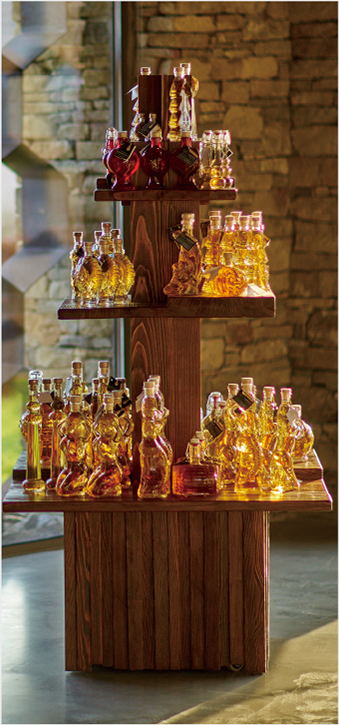
小喀爾巴阡山脈長100餘公里,海拔762米,寬僅6-7公里。山體由石灰岩、花崗岩、頁岩、白雲石等構成,山上有櫟樹和山毛櫸林,山坡下部為大片的葡萄園,是斯洛伐克最主要的葡萄酒產區。斯洛伐克著名的葡萄酒莊集中在佩基諾克和尼特拉以南的平原區,擁有一百多家釀酒商。托波強尼莊園(Château Topoľčianky)始於1933年,莊園占地450公頃,是斯洛伐克歷史悠久的最大酒莊,每年產量約6百萬瓶,生產超過60幾款不同酒標以及等級的葡萄酒,除紅白酒外,也生產出必須在零下7度才可以採收釀造的獨特「葡萄冰酒」。
Stretching over 100 kilometers, the Little Carpathians have an elevation of 762 meters and width of merely six to seven kilometers. The range consists of limestone, granite, shale, and dolomite; oak and beech forests can be found in the mountains, and the vineyards that cover large areas on the lower slopes form Slovakia’s most important wine production region. Famous Slovak wineries cluster on the plains south of Pezinok and Nitra, and the region has over 100 wine producers. Château Topol’čianky was founded in 1933, and the estate occupies over 450 hectares; it is the oldest and largest winery in Slovakia, producing approximately six million bottles of wine annually, and making 60 different labels and grades of wine. In addition to red and white wines, the winery also produces the unique “ice wine” that can only be brewed with grapes harvested at -7 degrees Celsius.
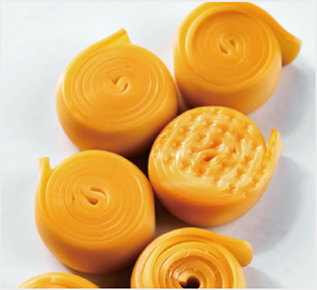
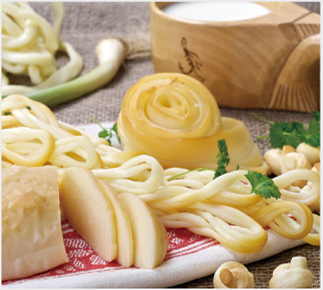
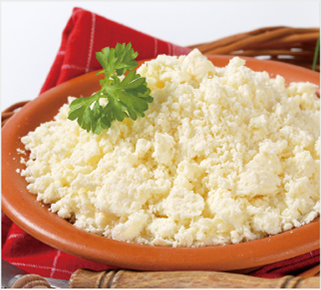
羊奶起司發源地在斯洛伐克的北部,可分為煙燻及未經煙燻的軟質起司,搭配餅乾或是直接吃都可以。軟質羊乳起司Bryndza在斯洛伐克經常用來入菜,尤其是傳統菜餚-羊奶酪馬鈴薯麵疙瘩(Bryndzové halušky),羊奶酪風味相當濃郁。作法是將馬鈴薯泥加入麵粉與少許鹽,攪拌均勻之後用手或刀子撥成麵疙瘩狀下熱水鍋烹煮,麵疙瘩煮熟浮在水面上即可撈起瀝乾置盤,上面再淋上羊奶酪,再加上一些爆香過的鹹豬肉(培根)與細蔥,風味絕佳,也是斯洛伐克的國民美食之一。
Sheep milk cheese originated in northern Slovakia, and can be categorized into smoked and unsmoked soft cheeses that are eaten with crackers or on their own. Bryndza, a soft sheep milk cheese, is a common ingredient in Slovak cooking, especially the traditional dish, Bryndzové halušky, which has a strong and rich sheep milk cheese flavor. Bryndzové halušky is made by first adding flour and a bit of salt to grated potatoes; then, mix the ingredients well into a dough, use a finger or knife to drop little pieces of the dough into boiling water, fish out the halušky when floating, place on a plate, and drizzle on Bryndza cheese and some stir-fried salted pork (bacon) or green onions. The dish is very delicious, as well as one of the Slovak national dishes.
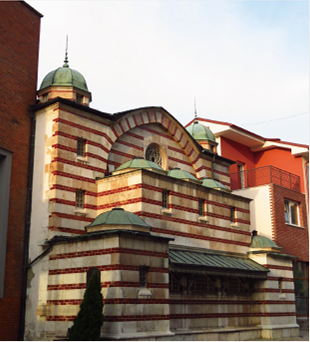
在古城特倫琴(Trenčín)東北方約2公里的山谷以溫泉勝地聞名於世,有“喀爾巴仟山寶石”的稱號。特倫琴的溫泉水,從地底約 1.2公里處上升,流經石灰質土壤和鎂層,利用硫磺熱礦泉以及礦化泥的使用,增益其治療效果。
The valley approximately two kilometers to the northeast of the ancient town of Trenčín is a famous hot spring destination, and revered as the “Carpathian Jewel.” The hot spring of Trenčín rises up from approximately 1.2 kilometers under the ground, and flows by lime soil and magnesium layer; the hot sulfur spring and mineralized mud further enhance the medicinal spring’s healing effects.
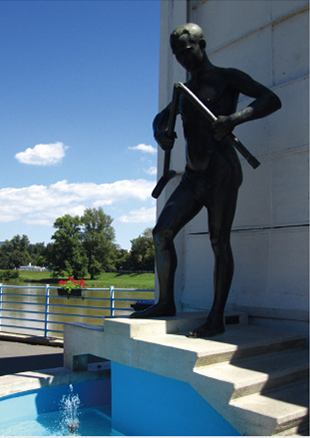
皮爾斯恰尼位於斯洛伐克最溫暖、陽光最充足的西南平原北端,溫泉水溫位於67℃至69℃之間,每一升水中都含有約1500毫克礦物質,屬於無色無味的碳酸氫鈉泉,泉源深達地下兩公里,有養生、護膚和美容的功效,是中歐地區品質最好和具有醫療效果的溫泉之一。
Piešťany is situated in the northern part of the plains in southwestern Slovakia, where the climate is the warmest and sunlight the most sufficient. The temperature of the hot spring is between 67 to 69 degrees Celsius; every liter of the hot spring water contains 1500 mg of minerals. The colorless and odorless sodium bicarbonate spring comes from as deep as two kilometers underground, and is known for its healing, skin smoothing, and beautifying effects, making it one of the Central European hot springs that has the highest quality and greatest medicinal effects.
斯洛伐克共和國,是中歐的一個內陸國家,面積4.9萬平方公里,略大於臺灣,但人口只有約540萬居民,是臺灣的四分之一。跟臺灣相比,斯洛伐克的氣候比臺灣冷得多,冬天平均低溫可達零下六度,國家境內流通的貨幣是歐元,官方語言是斯洛伐克語。
The Slovak Republic is a landlocked country in Central Europe. Its surface area is approximately 49,000 square-kilometers, which is slightly larger than Taiwan, but its population is only around 5.4 million, one-quarter of the population of Taiwan. Compared to Taiwan, Slovakia’s climate is much colder, with average temperature in winter reaching as low as -6 degrees Celsius. The currency in Slovakia is the euro, and the official language is Slovak.

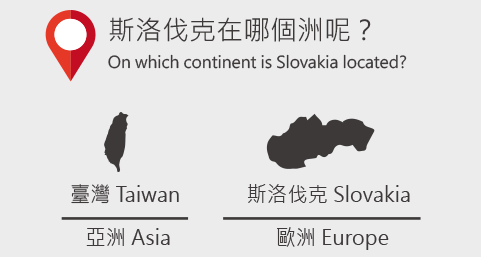
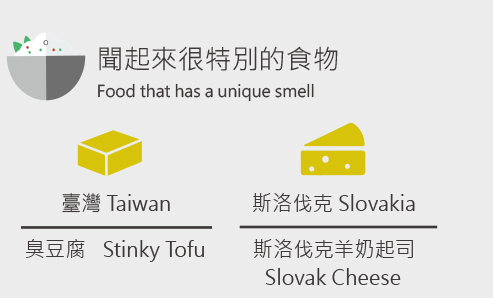
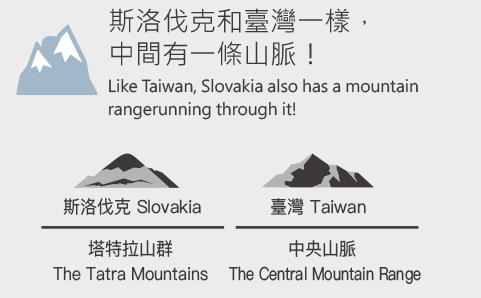

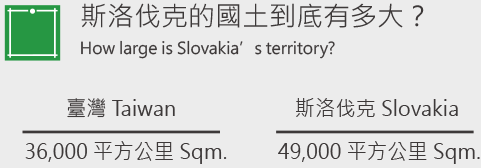
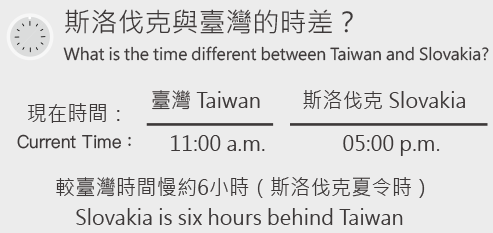
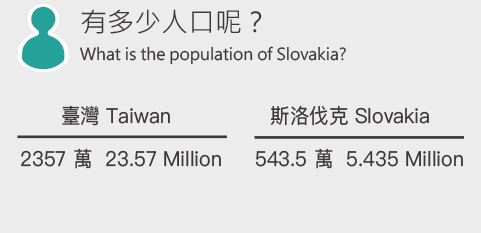
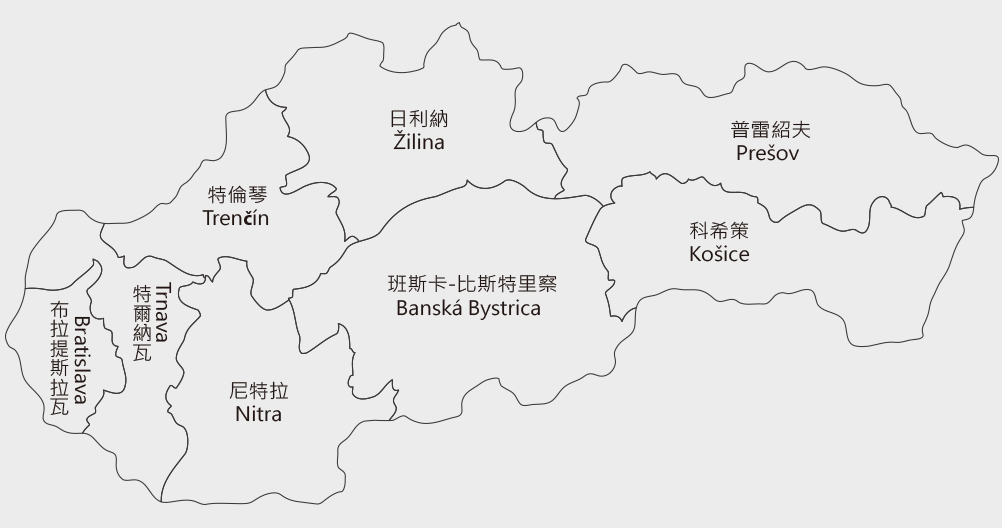
斯洛伐克分八個州,每個州以其首府命名,其下分區,現有79個區。重要城市有首都布拉提斯拉瓦、科希策、日利納、尼特拉等等。
Slovakia is divided into eight Regions (kraj), each named after the capital and consists of districts (okres/okresy). There are currently 79 districts. Major cities include the nation’s capital of Bratislava, as well as Koršice, Žilina, and Nitra.
斯洛伐克的建國傳說:當上帝詢問斯洛伐克人想從祂這裡獲得什麼禮物時,斯洛伐克人回答:「我們不想要廣闊的土地,也不要權力與金錢、榮耀,我們只需要您的愛!」,因此上帝賜予了斯洛伐克許多超出他們所想像的贈禮,讓斯洛伐克人得以在最美麗的家園中生生不息,成了全世界絕美的旅遊勝地之一。
Legend has it that when God asked Slovaks what gift they wanted from Him, the Slovak people answered: “We do not want vast land, nor power, money, and glory. All we want is Your love!” Thus, God has given the Slovak people many gifts beyond their imagination, allowing them to live for generations to come in the most beautiful homeland that has become one of the most magnificent attractions in the world.
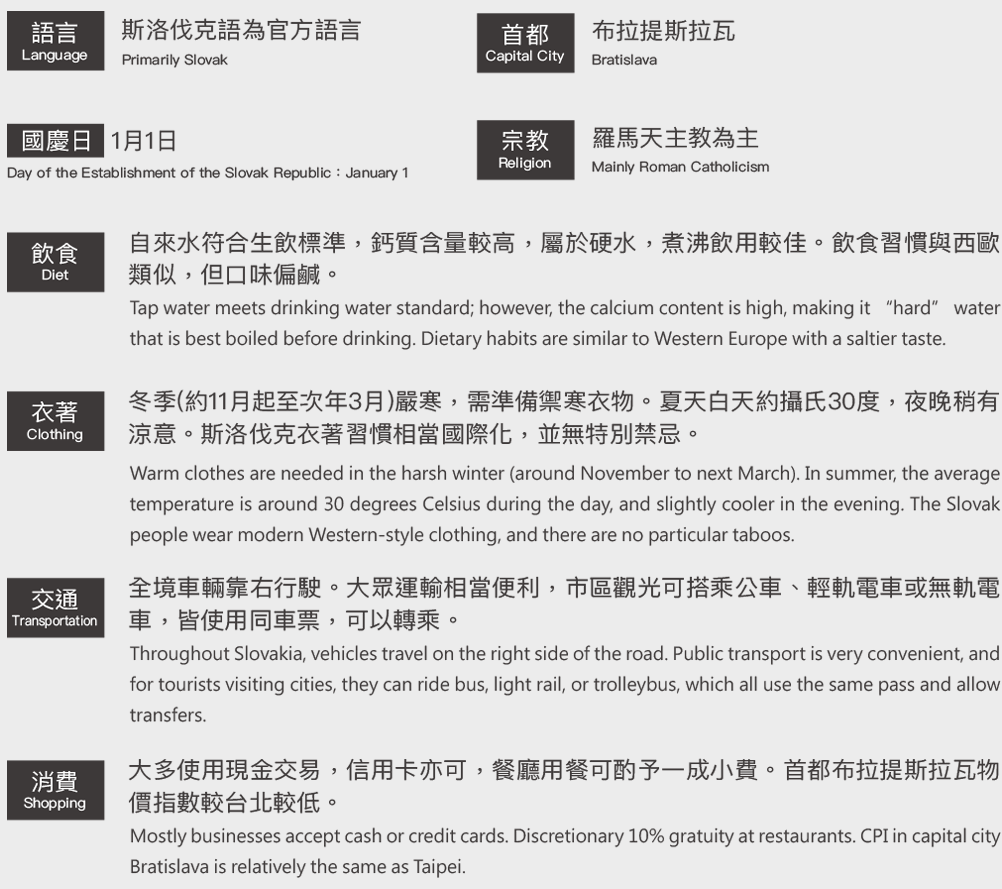
中世紀時期,受到宗教與政治影響,作家都使用拉丁文或捷克文寫作。直至17世紀,斯洛伐克的民歌開始出現,特別是歌頌斯洛伐克民間傳説中的英雄-楊諾什克的民間文學,表達了當時人民反對封建專制壓迫、要求社會改革的呼聲。18-19世紀,斯洛伐克民族運動蓬勃發展,詩人揚・霍利(1785~1849)的詩作,大多歌頌古代斯拉夫人的勇敢精神。
In the Middle Ages, writers wrote in Latin or Czech under religious or political influences. It was not until the 17th century that Slovak folk songs began to emerge, especially the folk literature that praised the legendary Slovak folk hero Juraj Janosik, reflecting the people’s voices at the time, as they fought the oppressive feudal autocracy and demanded social reform. The Slovak nationalist movement flourished in the 18th and 19th centuries, and poet Ján Hollý (1785~1849) wrote most of his poems as odes to the bravery of ancient Slavic people.
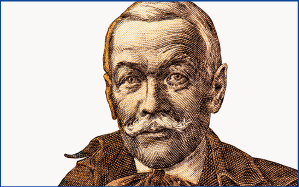
帕沃‧歐札格‧赫維茲多斯拉夫是斯洛伐克的詩人、劇作家、翻譯家,曾擔任過捷克斯洛伐克議會議員。原名為帕沃‧歐札格,赫維茲多斯拉夫是後來才加上的,意為「斯拉夫之星」。他早年以匈牙利語創作詩文,直到在一次聚會中以匈牙利語朗誦自己的詩作博得滿場喝采之後,他的母親流著淚對他說道:「兒子啊!我真希望能夠聽懂你在說些甚麼!」頓時他才驚覺到母語的重要性,從此就改以斯洛伐克語文來創作!後來成為斯洛伐克寫實文學的代表人物,著作等身。布拉提斯拉瓦舊國家歌劇院前的廣場就以他為命名,廣場上也豎立了他的坐姿雕像,文學與音樂各踞廣場的一端互相對話著。
Pavol Országh Hviezdoslav, a Slovak poet, playwright, and translator. He was also a member of the Czechoslovakia parliament. He was born Pavol Országh, and added Hviezdoslav to his name later on, which means “Slav of the stars.” Early on, he wrote poetry in Hungarian. It was not until after he recited his own poems in Hungarian at a gathering and received bursting applause, when his mother said to him with tears in her eyes: “My son! How I wished I could understand what you were reading!” that he suddenly realized the importance of mother tongue; since then, he switched to write in Slovak! Eventually, he became an iconic figure of Slovak literary realism, and produced extensive works. The Hviezdoslav Square in front of Bratislava’s old Opera House is named after him, and a sitting statue of him has also been erected at the square, as literature and music dialogues with each other from respective ends of the square.
米蘭·魯弗斯出生在今天的斯洛伐克ilina地區的瓦匠家庭。他的詩歌將道德、人生價值觀、愛、真理、美麗和苦難等深入探究,以人類和世界面臨的悲劇融合在一起的方式而聞名。
Milan Rúfus was born to a family of bricklayers in present-day Ilina, Slovakia. His poetry is known for the way he incorporated moral and life values, love, truth, beauty, suffering and the tragedy of both humans and the world.
薩摩.洽路普卡的首部詩集於 1836 年發表,他的作品中充滿了對於斯洛伐克鄉土的熱愛與忠誠。1868年出版詩集《聲樂》(Spevy)當中更展現出對斯洛伐克母語的期許以及新國家願景。至今他的故居已經改為文學紀念館,外面有一座斧頭斬斷鐵鍊造型的雕塑,象徵斯洛伐克擺脫了千百年來的束縛!
Samo Chalupka’s first poetry collection was published in 1836, and his poems exuded his passion and loyalty for the soils of Slovakia. The poetry collection, Spevy, published in 1868, further displayed his expectations for the Slovak mother tongue and vision for the new nation. Today, his old residence has been repurposed into a memorial hall, which has a sculpture of an axe breaking a chain outside, symbolizing that Slovakia has broken free from its shackles over the past tens of centuries!
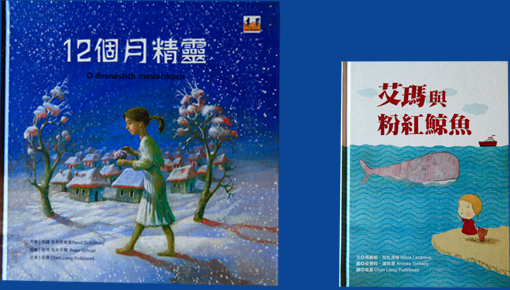
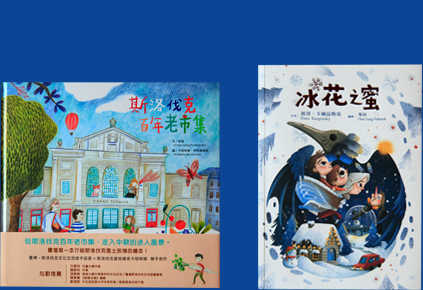
近年來藉由梁晨博士的翻譯,台灣出版了許多斯洛伐克的兒童文學繪本,色彩豐富的圖文及極具特色的繪畫風格,受到許多讀者的注意,如《米米與莎莎》、《12個月精靈》、《艾瑪與粉紅鯨魚》等。部分斯洛伐克的青少年讀物如《艾伊卡的塔》、《冰花之蜜》等,更生動描述青少年在成長時,面臨一連串親情、友情的變化,該如何面對與調適的過程。
Through Dr. Chen Liang Podstavek’s translation in recent years, many illustrated books of Slovak children’s literature have been published in Taiwan. The illustrations in rich and splendid colors and drawings with unique styles have caught the eyes of many readers, such as Mimi a Líza (Mimi & Liza), O Dvanástich Mesiacikoch (The Twelve Months), and Ema a Ružová Veľryba (Ema and the Pink Whale). Some Slovak books for young adults, such as Ajka Dievčatko z Veže (Tower Ajka from the Tower/The Little Girl from the Tower) and Med z L’adových Kvetov (Frost Flower Honey), vividly depict the series of changes in relationships with family and friends as young adults grow up, and how they can face and adapt to these changes.
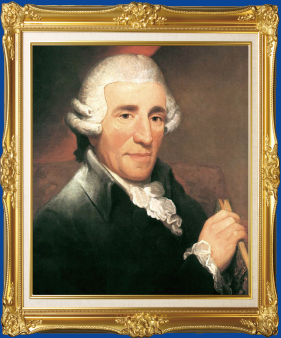
海頓擔任匈牙利的宮廷樂長時,寫了第一部喜歌劇《女歌手》(La canterina), 1761年在布拉提斯拉瓦首演。1784年於現今斯洛伐克總統府舉辦海頓交響曲演奏會。
When Haydn was the head musician at the Hungarian court, he wrote his first opera La Canterian, which premiered in Bratislava in 1761. In 1784, Haydn held a symphony concert at the Grassalkovich Palace (now the office residence of the president of the Slovak Republic).
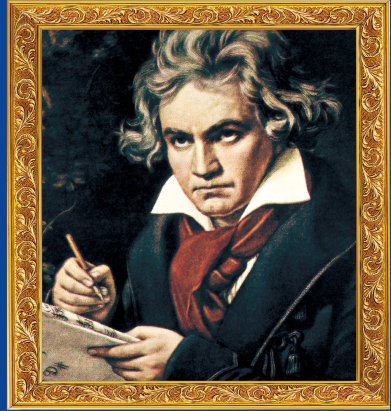
貝多芬受邀前往布倫斯維克家族位於斯洛伐克的多納・庫魯帕(Dolná Krupá)莊園避暑時,與茱麗葉塔小姐迸出愛情的火花,1802年他將升C小調第14號「幻想風格的奏鳴曲」題獻給茱麗葉塔。雖然這段戀情最後告終,但透過德國詩人的渲染,樂譜的出版商便趁勢將此曲加上了《月光》的標題,於是這首曲子便以《月光奏鳴曲》聞名於世。
When Beethoven was invited to visit the Brunswick family’s Dolná Krupá Manor House in Slovakia in summer, he met and fell in love with Ms. Giulietta. In 1802, he dedicated the Piano Sonata No. 14 in C-Sharp Minor “Almost a Fantasy” to Giulietta. Their relationship eventually ended, but due to the words of a German poet, music publisher added “Moonlight” to the title, and the sonata has since been known throughout the world as the Moonlight Sonata.
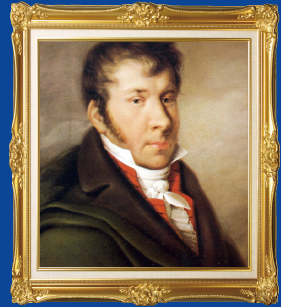
出生於布拉提斯拉瓦的著名音樂家,樂風從古典樂派過渡到浪漫樂派的他,曾到歐洲各地巡迴演奏以及從事音樂教育。
A famous musician born in Bratislava. His music reflects the transition from the Classical to the Romantic musical era, and he has toured around Europe for concerts and performances and engaged in music education.
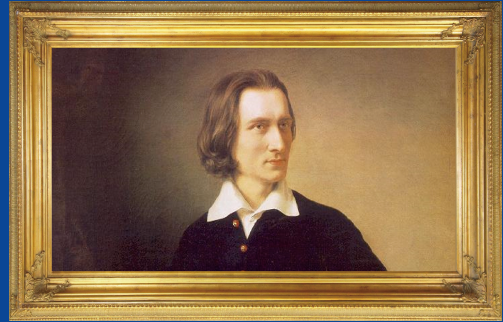
鋼琴大師與交響詩之父李斯特,年僅9歲時在布拉提斯拉瓦的范圖斯卡街宮邸演奏會中一鳴驚人,從此開啟李斯特的成名之路。
Liszt, piano master and Father of Symphonic Poem, was only nine when he became an instant hit after a concert at the palace on Ventúrska Street, thus embarking on the road to fame.
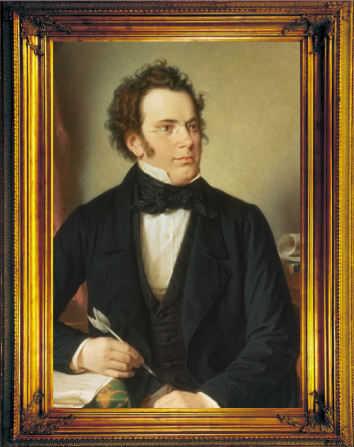
舒伯特曾在斯洛伐克熱立耶佐夫策的莊園避暑,教導伯爵的兩位千金,在此期間,他接連創作出了獻給卡羅琳娜的F小調幻想曲,以及B大調奏鳴曲、匈牙利語嬉遊曲及a小調弦樂四重奏。
Schubert once went to a country house in Želiezovce, Slovakia, for a summer getaway, where he tutored Count Esterházy’s two daughters, Maria and Caroline. During this time, he wrote Fantasia in F minor, which he dedicated to Caroline, and Sonata in B major, Divertissement à la hongroise, and String Quarter in A minor.
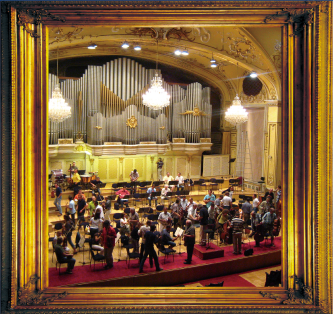
鋼琴大師與交響詩之父李斯特,年僅9歲時在布拉提斯拉瓦的范圖斯卡街宮邸演奏會中一鳴驚人,從此開啟李斯特的成名之路。
Liszt, piano master and Father of Symphonic Poem, was only nine when he became an instant hit after a concert at the palace on Ventúrska Street, thus embarking on the road to fame.
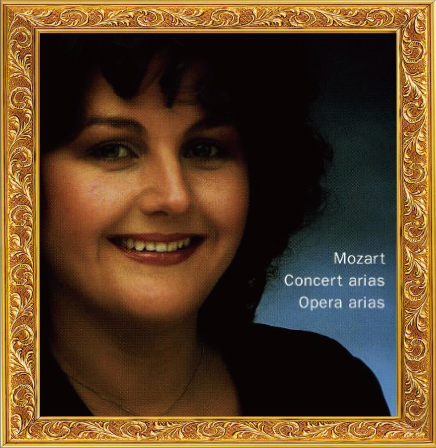
艾蒂達·葛魯貝洛娃是斯洛伐克女高音歌劇唱家,廣為眾人所知的演出有羅西尼名歌劇《賽維里亞理髮師》的羅西娜、莫札特名劇《魔笛》夜后、威爾第名劇《弄臣》,為20-21世紀最偉大的戲劇性花腔女高音之一。
Edita Gruberová was a Slovak soprano. She was known for portraying Rosina in Rossini’s famous opera, The Barber of Seville, the Queen of the Night in Mozart’s The Magic Flute, and Verdi’s Rigoletto. She was one of the greatest dramatic coloratura sopranos between the 20th and 21st centuries.
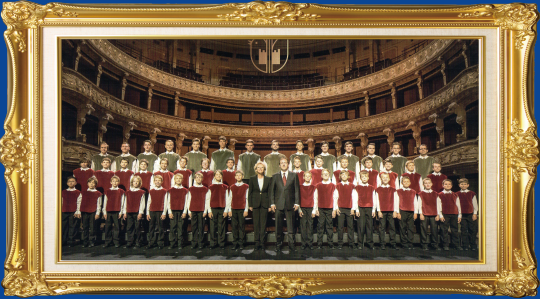
斯洛伐克引以為傲的「布拉第斯拉瓦男童合唱團」,他們演唱的足跡遠達美國、加拿大、英格蘭、瑞典、德國、荷蘭、法國、奧地利、俄羅斯、以色列、日本與台灣,將上帝賜給斯洛伐克人的美好歌聲傳遍到世界的每一個角落!
Slovakia’s prided “Bratislava Boys Choir” has toured to the U.S., Canada, England, Sweden, Germany, the Netherlands, France, Austria, Russia, Israel, Japan, and Taiwan, bringing the wonderful voice gifted to the Slovak people by God to all corners of the world!
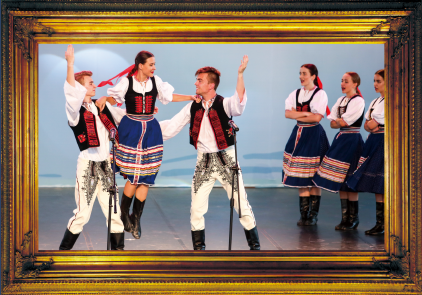
魯曲尼查(Lúčnica)是斯洛伐克首屈一指的民俗歌舞團,由許德凡.諾薩勒於1948年創立,曾代表斯洛伐克在包含台灣的60多個國家表演,並灌錄許多張CD與DVD。另外,來自特倫琴古城的「特倫琴民俗舞團」Folk ensemble Trenčan,成立於1949年,曾經於2016年來台參與宜蘭國際童玩藝術節,並演出將斯洛伐克傳統民俗歌舞結合宜蘭民謠「丟丟銅仔」而成的「火車之舞」,表演大受好評。
Lúčnica is the top Slovak national folklore ballet founded by Štefan Nosál in 1948, and has represented Slovakia to perform in over 60 countries, including Taiwan. They have also recorded several CDs and DVDs. Moreover, Folk Ensemble Trenčan from Trenčín founded in 1949 participated in the 2016 Yilan International Children’s Folklore and Folkgame Festival, and gave a performance titled “Train Dance” that combined the traditional Slovak folklore dance and singing with Yilan’s folk song “Diu Diu Tong,” winning praises of audience.
首都布拉提斯拉瓦的廣場與街道,有許多大大小小的雕像,每一座雕像都有各自流傳有趣的故事,因此是遊客們相當喜愛的旅遊地點之一。這些雕像大多為公共藝術,而此地的店家也會用心地與其搭配裝飾,讓首都布拉提斯拉瓦的街道增添不少趣味。
There are many sculptures and statues of different sizes in the plazas and streets of Bratislava, the capital city of Slovakia. Every sculpture has its own interesting anecdote, making them popular attractions among tourists. These sculptures are mostly public artworks, and therefore, local businesses will also carefully match decorations with them, adding some interesting charms to the streets of Bratislava.
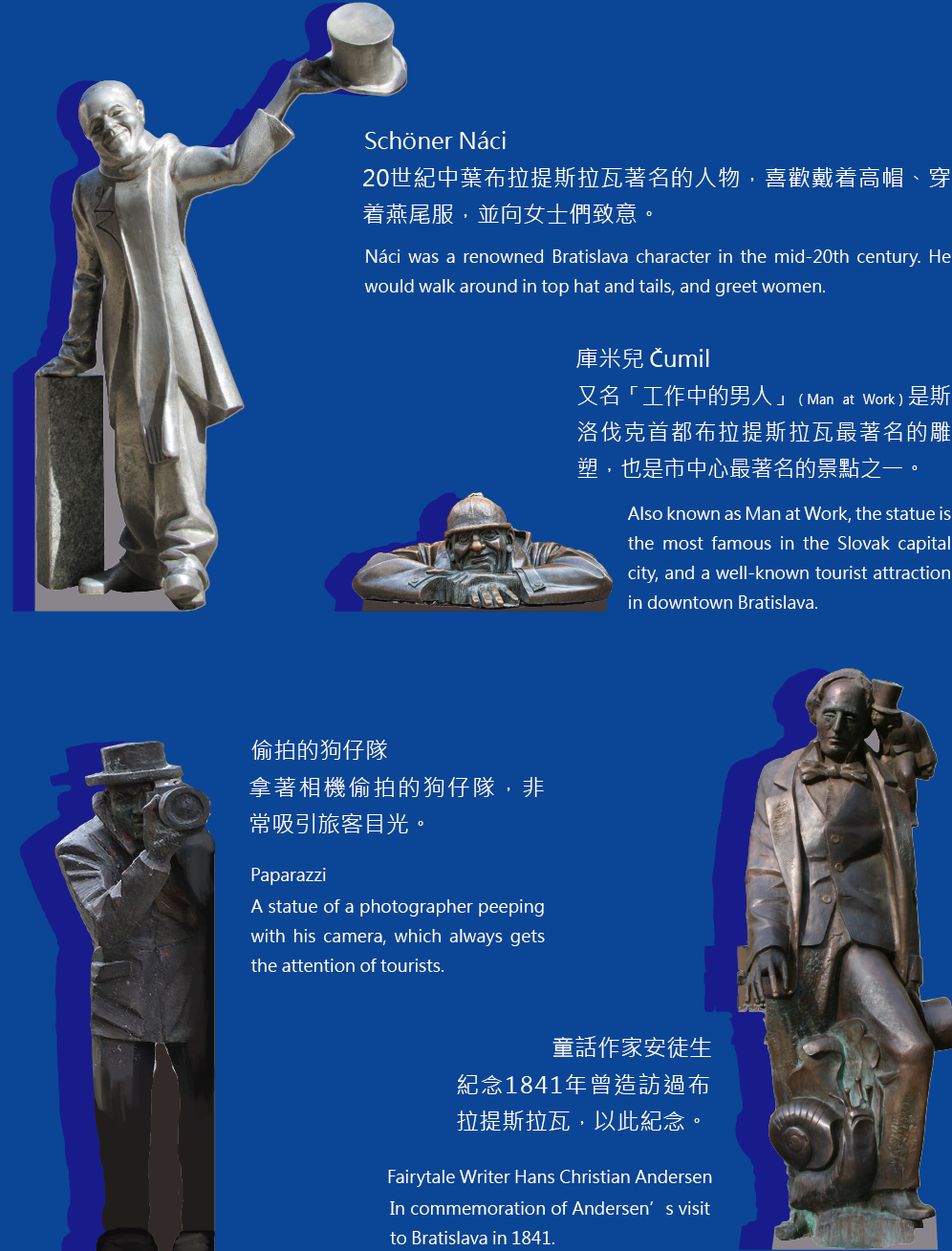
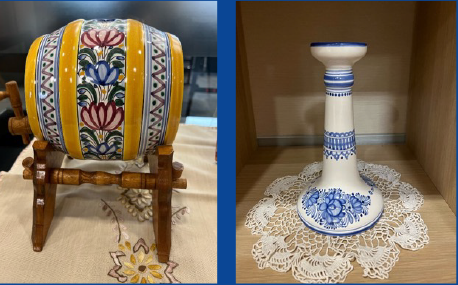
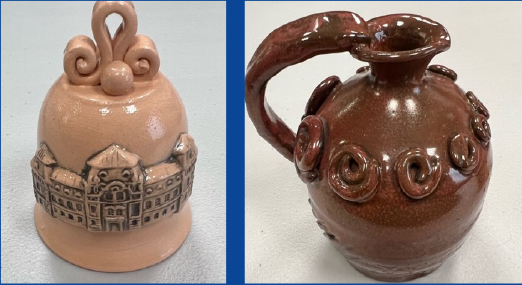
自古以斯洛伐克就以農、林、礦、畜牧等產業為主的地區,因此也展出農村民俗圖案與造形為主的陶藝,陶藝品的創作也以符合農忙、家居等功能實用目的為主。斯洛伐克的陶藝品配色樸實簡單,但是卻別具特色。
Since ancient times, Slovakia has primarily been a region of agriculture, forestry, mining, and animal husbandry, and therefore, it has also developed the craft of pottery that mainly exhibits rural folk patterns and designs. Ceramics making also fits the practical purposes of farming and domestic use. Slovak pottery features simple colors, but displays a unique style.
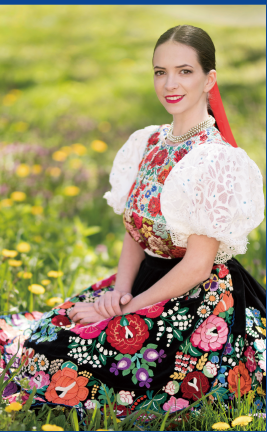
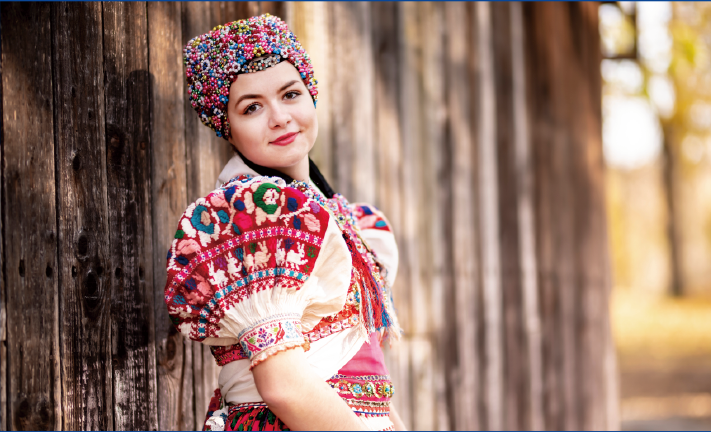
Kroje是斯洛伐克人所穿的民族服飾,受到哥德式的影響,會在頭上披上披肩和頭巾,而精美的衣褶和蕾絲項圈則是文藝復興時代的典型,從巴洛克風格的鐘形裙子到精緻的斯拉夫圖案,這些民族服裝展現出斯洛伐克傳統與複雜的歷史發展。Kroje具有許多典型裝飾和顏色,其中有三種基本類型:
Kroje are folk costumes worn by Slovaks. Gothic influence is seen in tying shawls and kerchiefs on the head. Fine pleats and gathered lace collars typify the Renaissance era. From Baroque bell-shaped skirts to delicate Slavic patterns, these folk costumes show the complex growth of Czech and Slovak traditions.Kroje has many typical decorations and colors. There are three basic types of kroje: